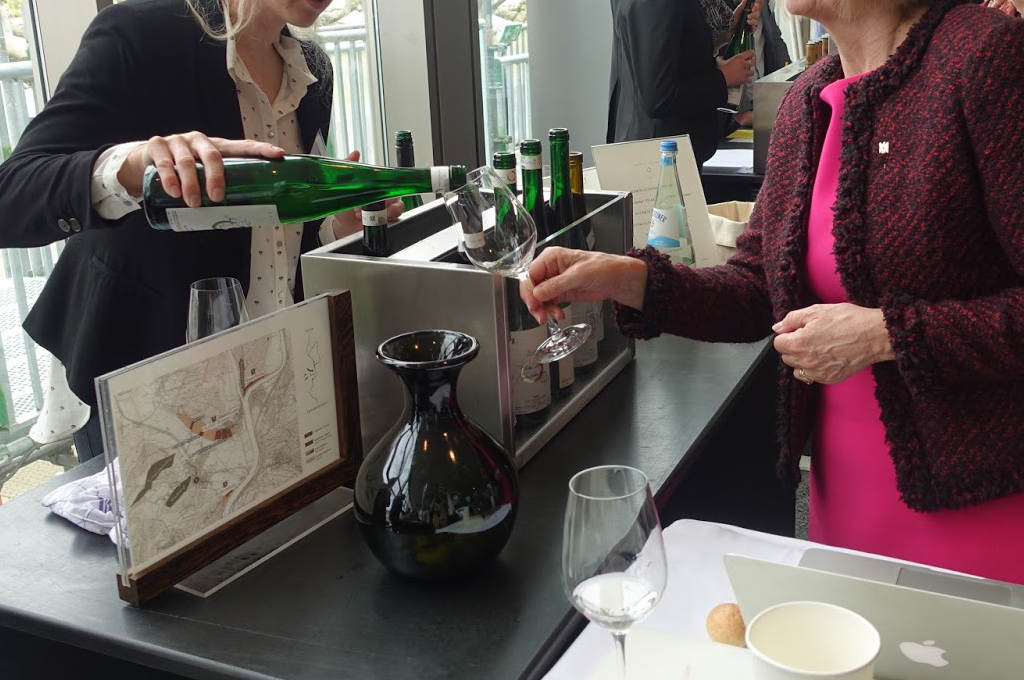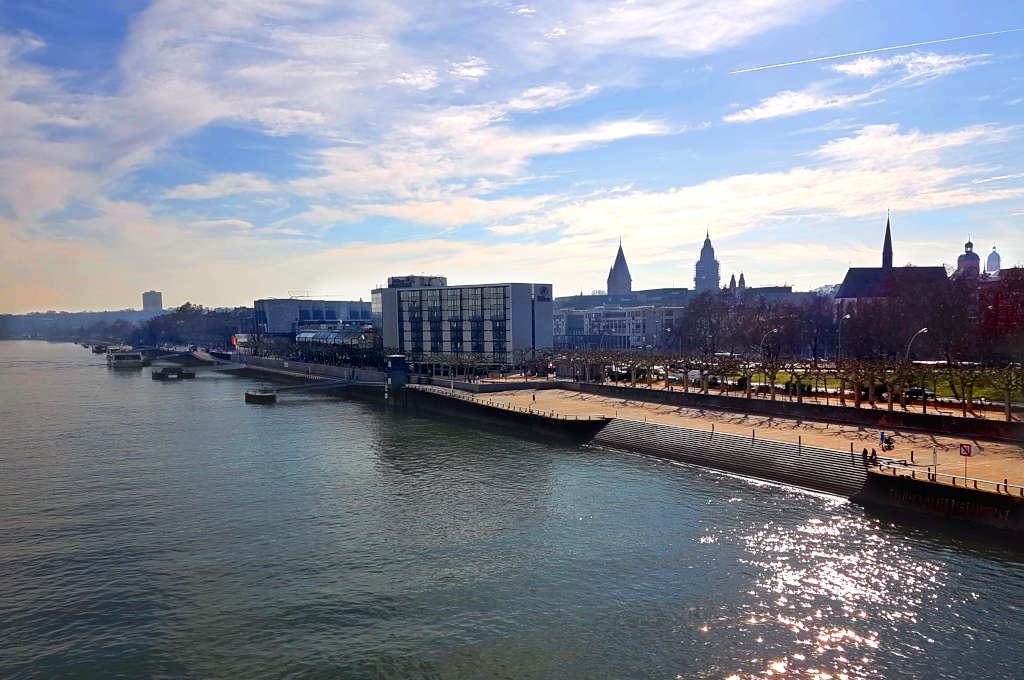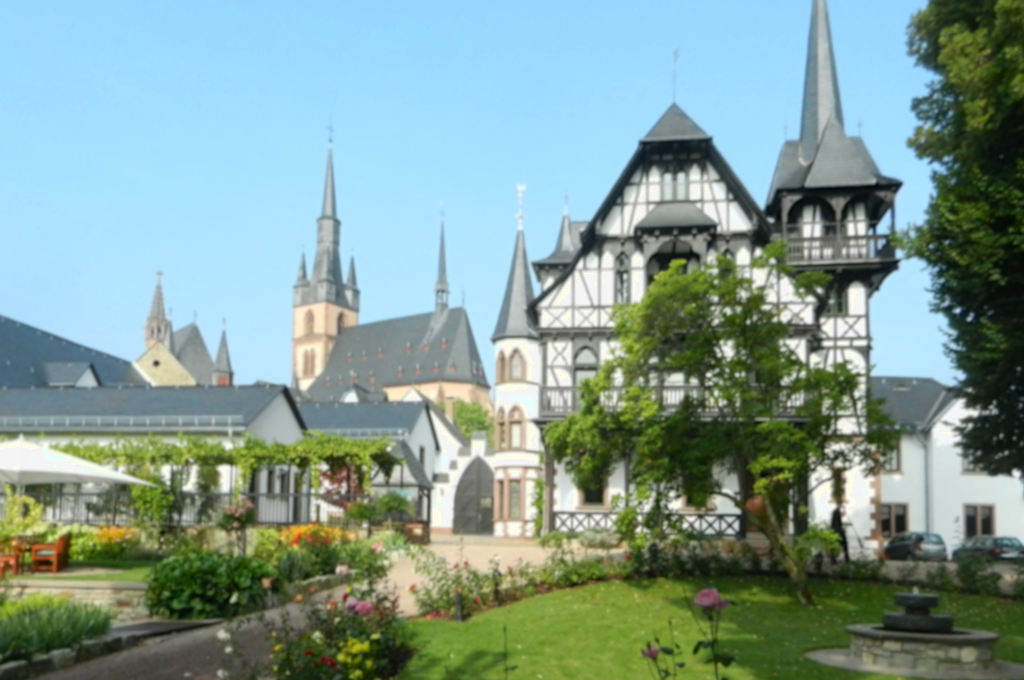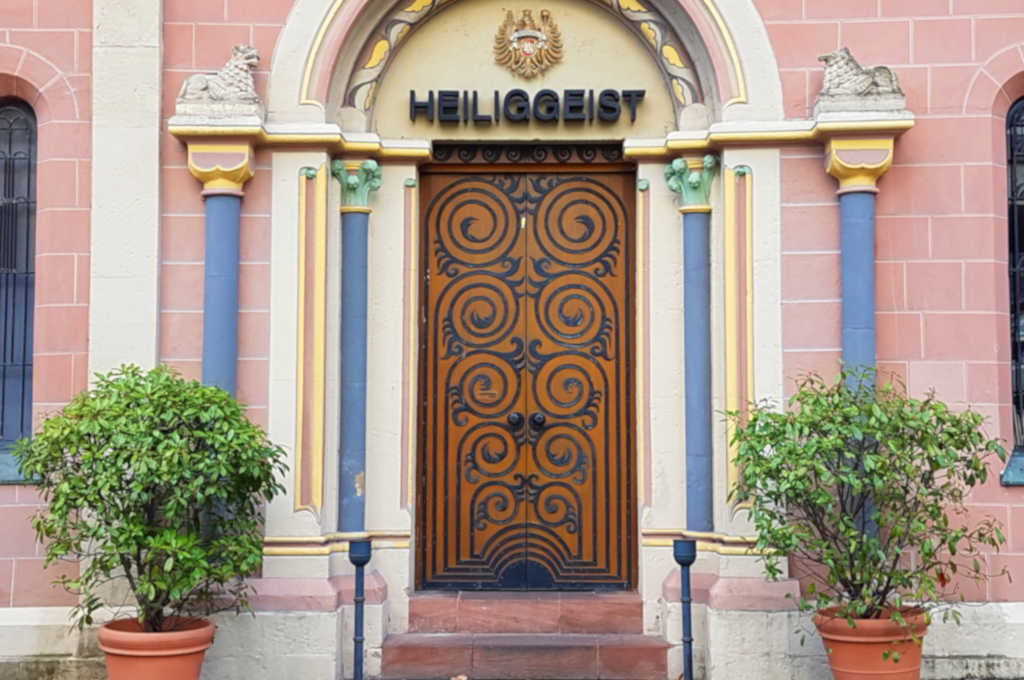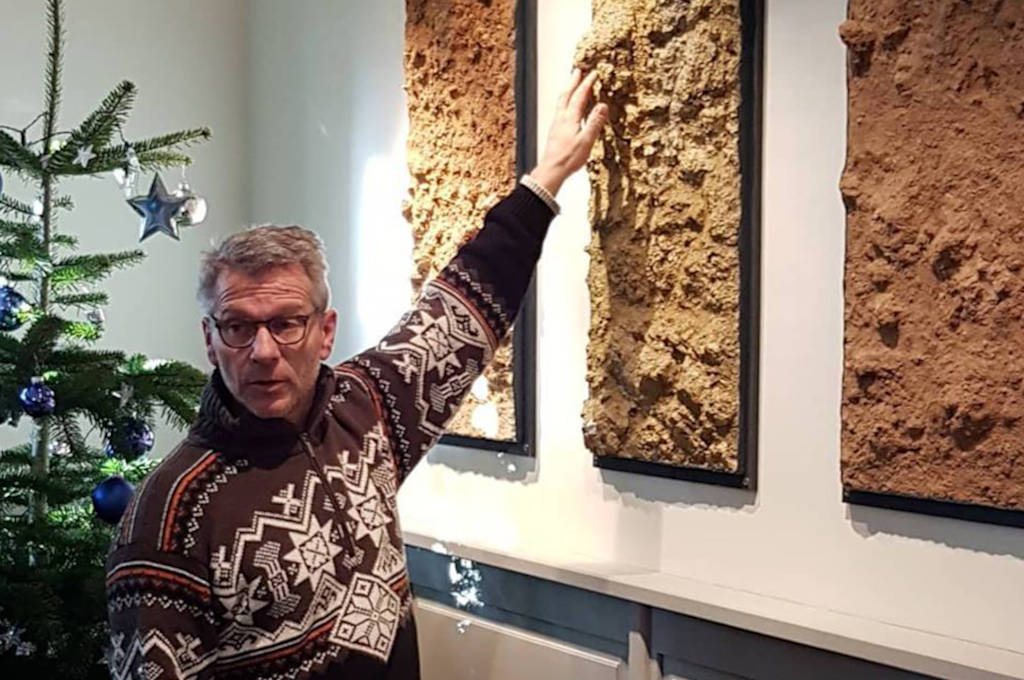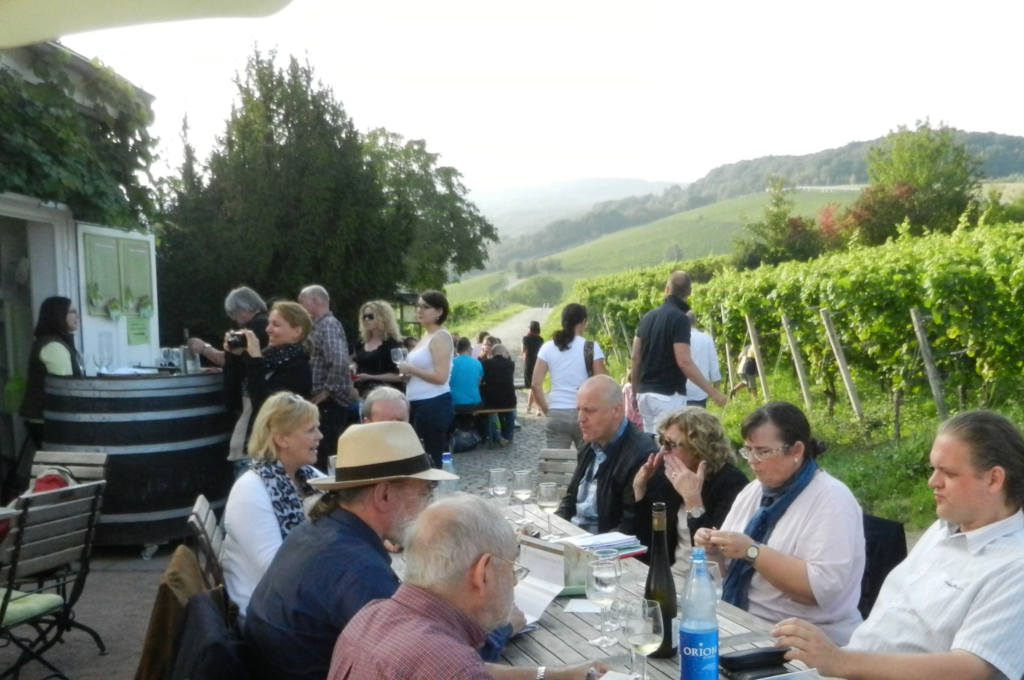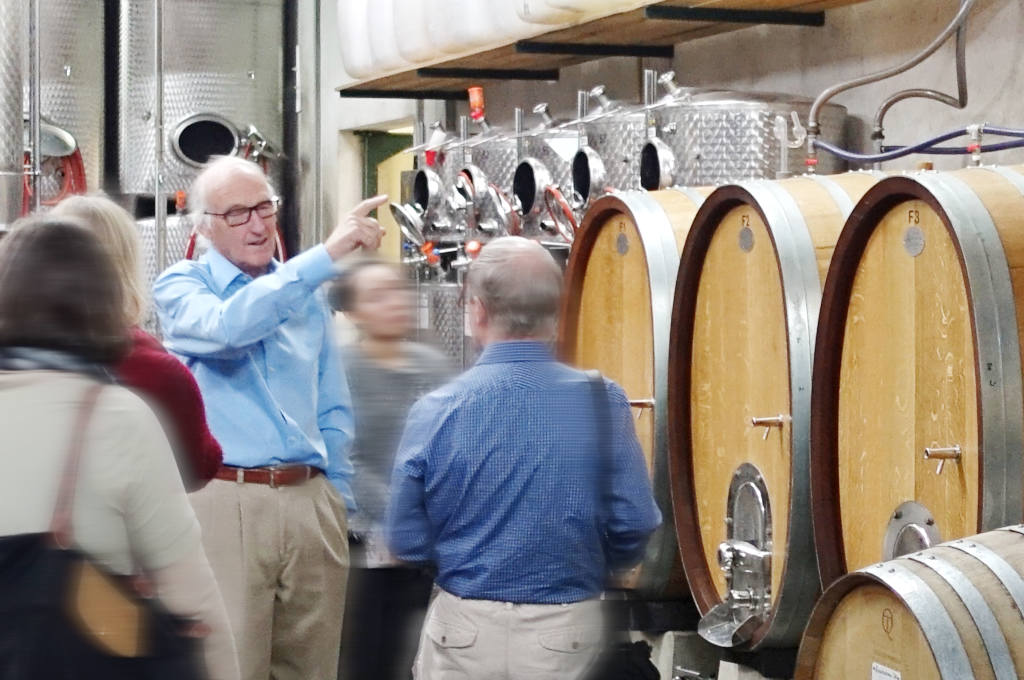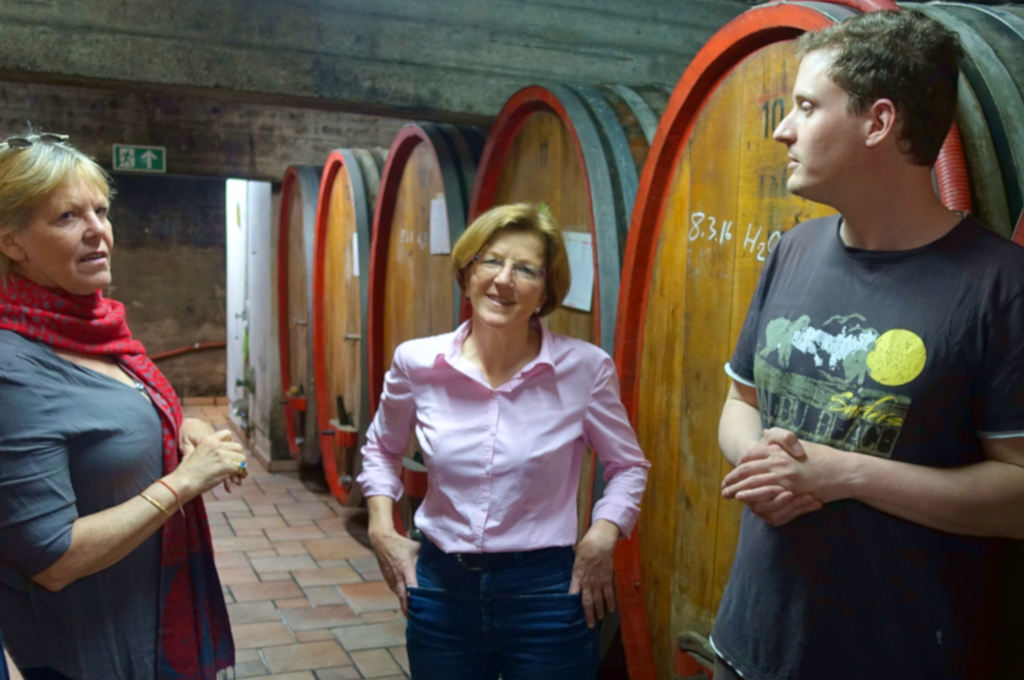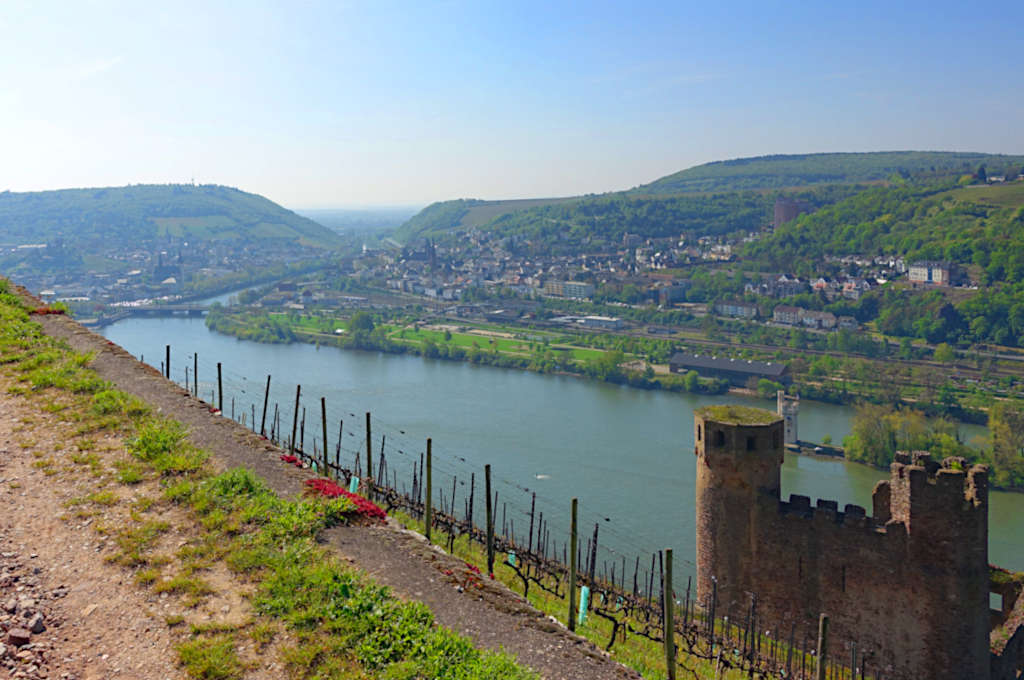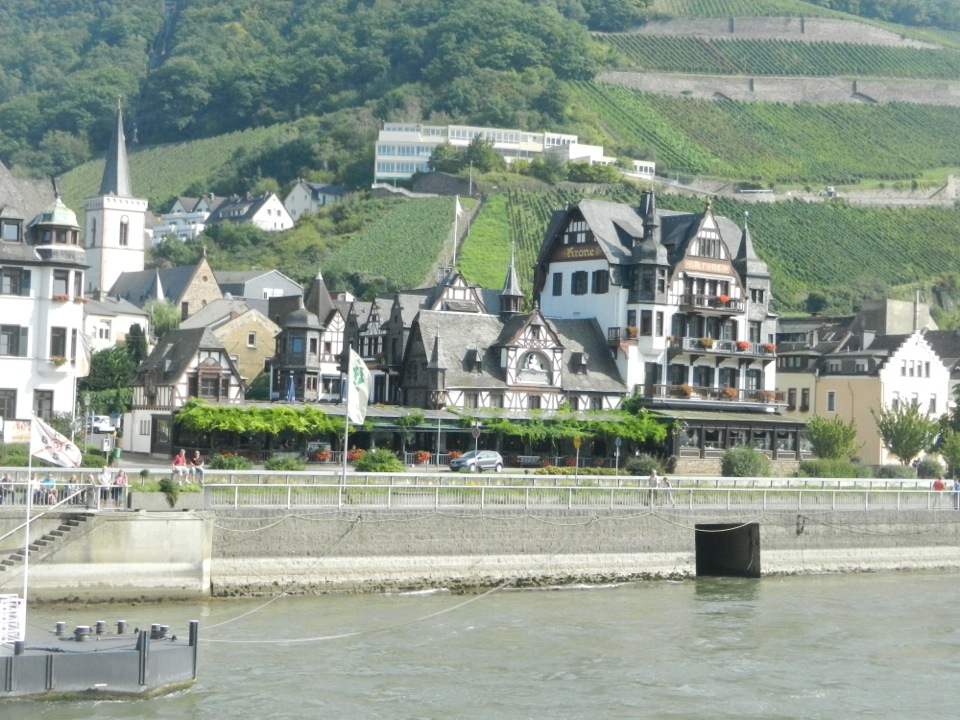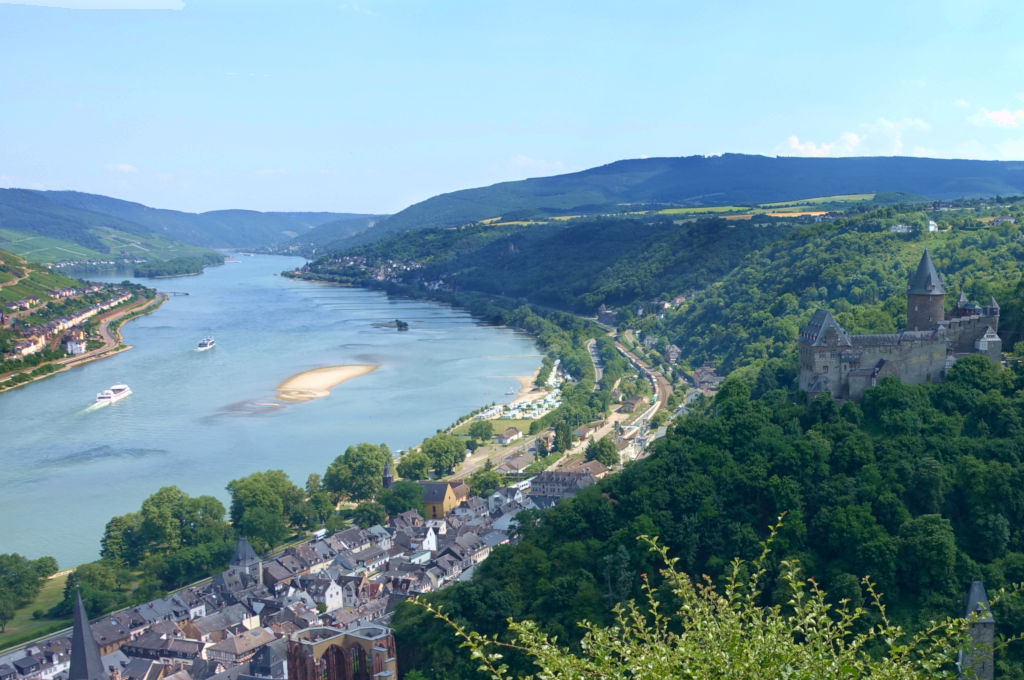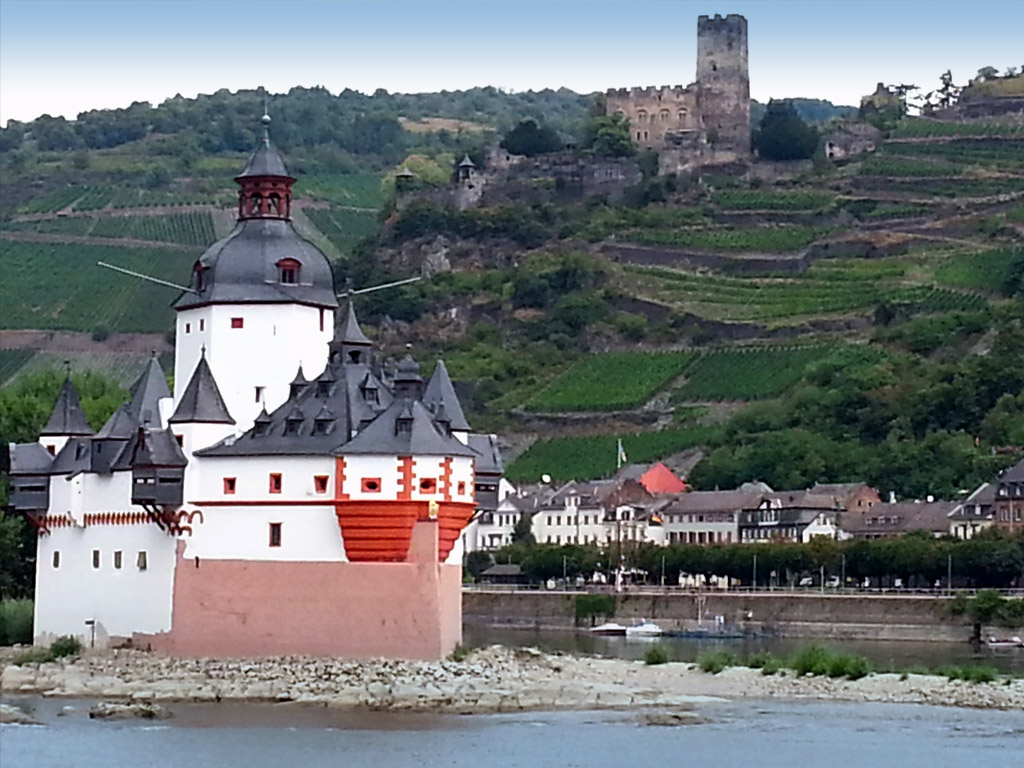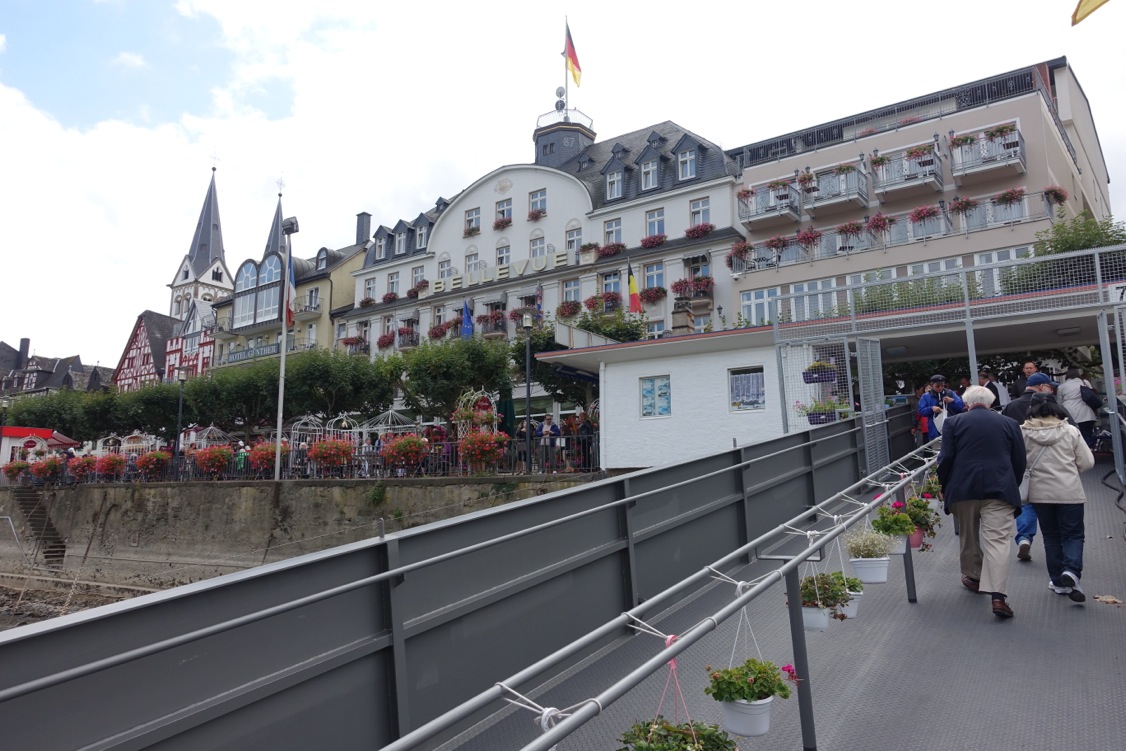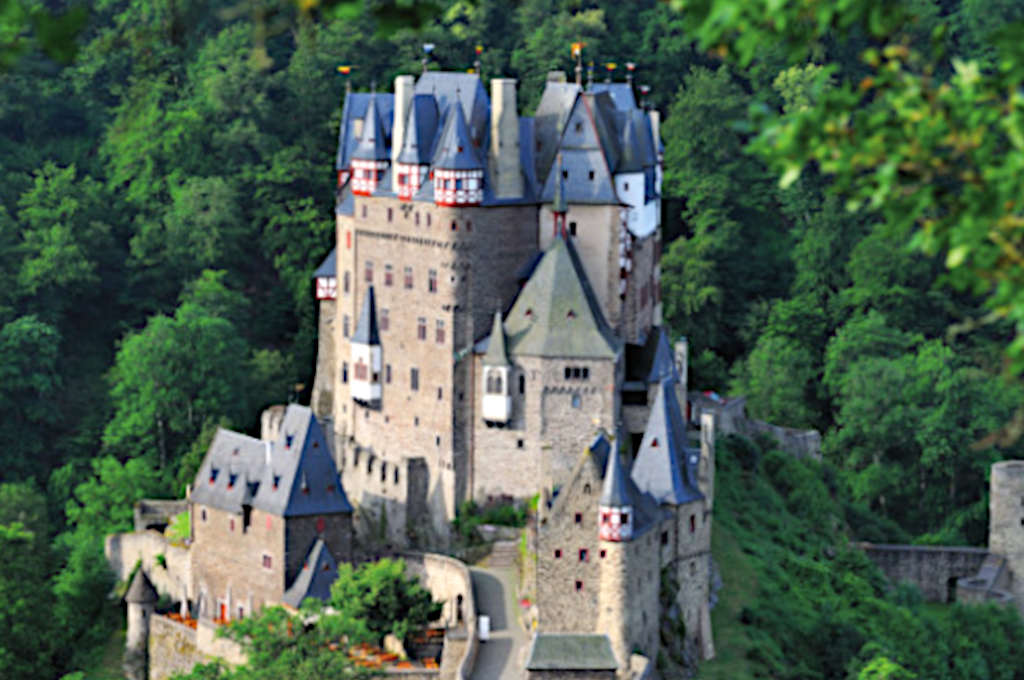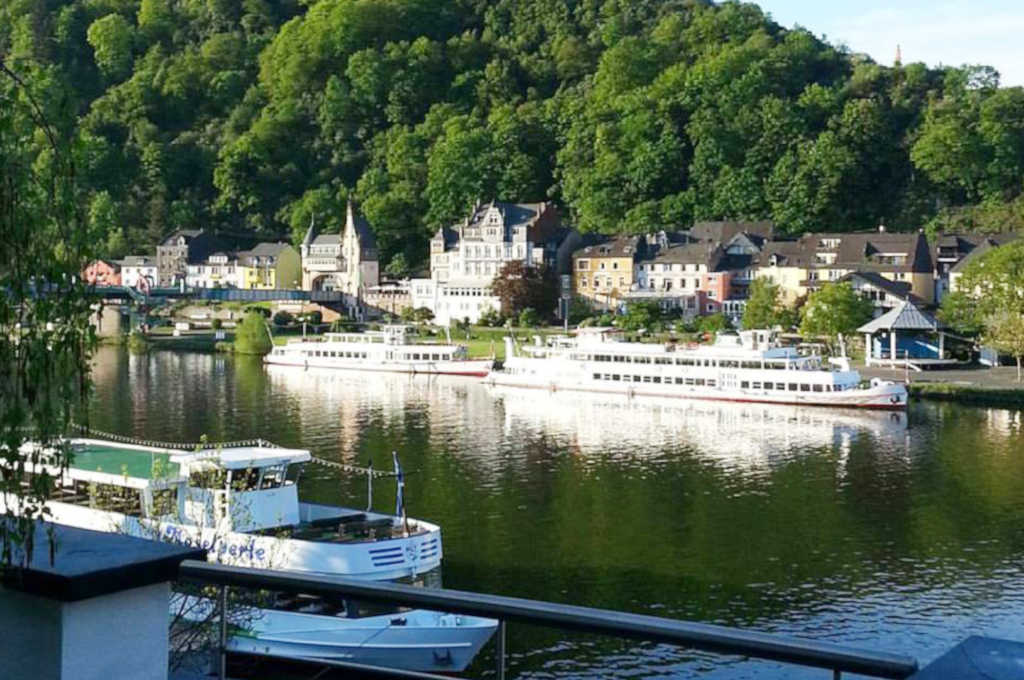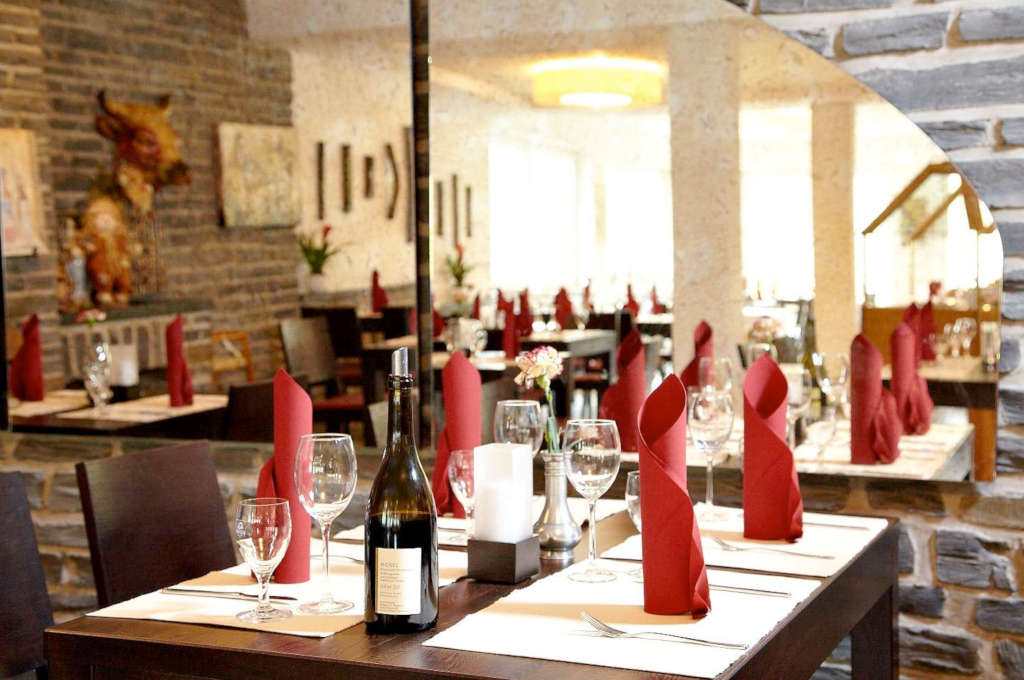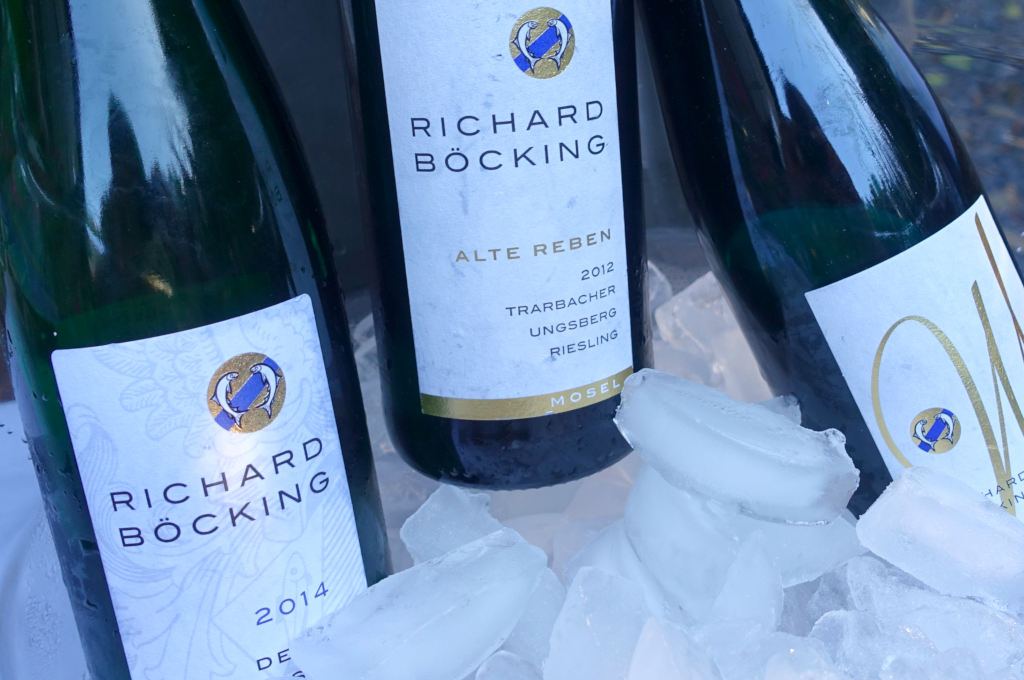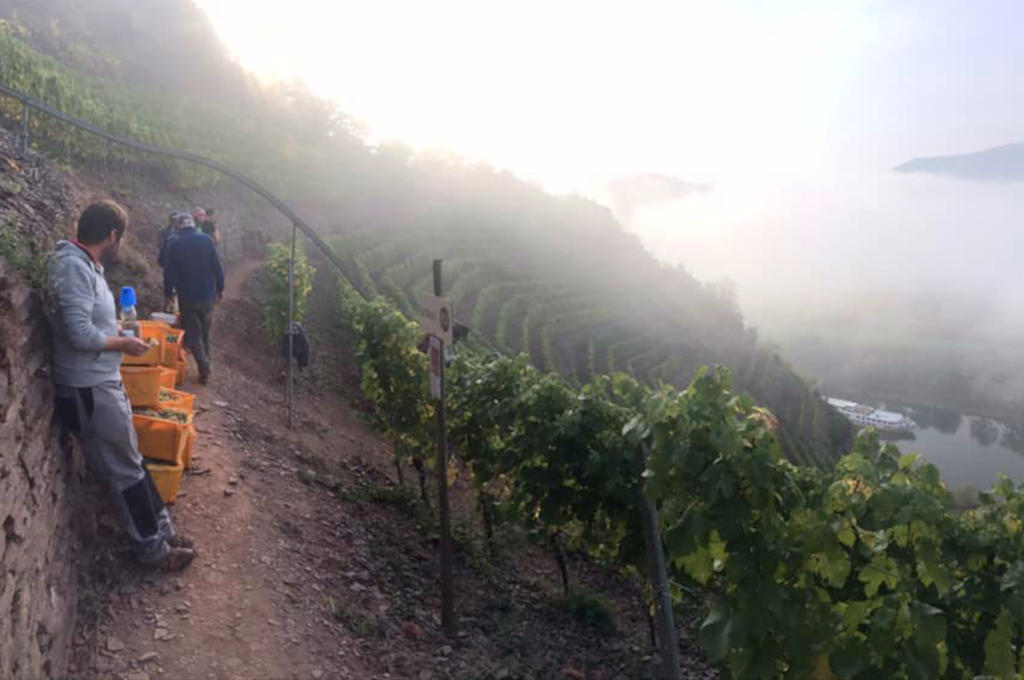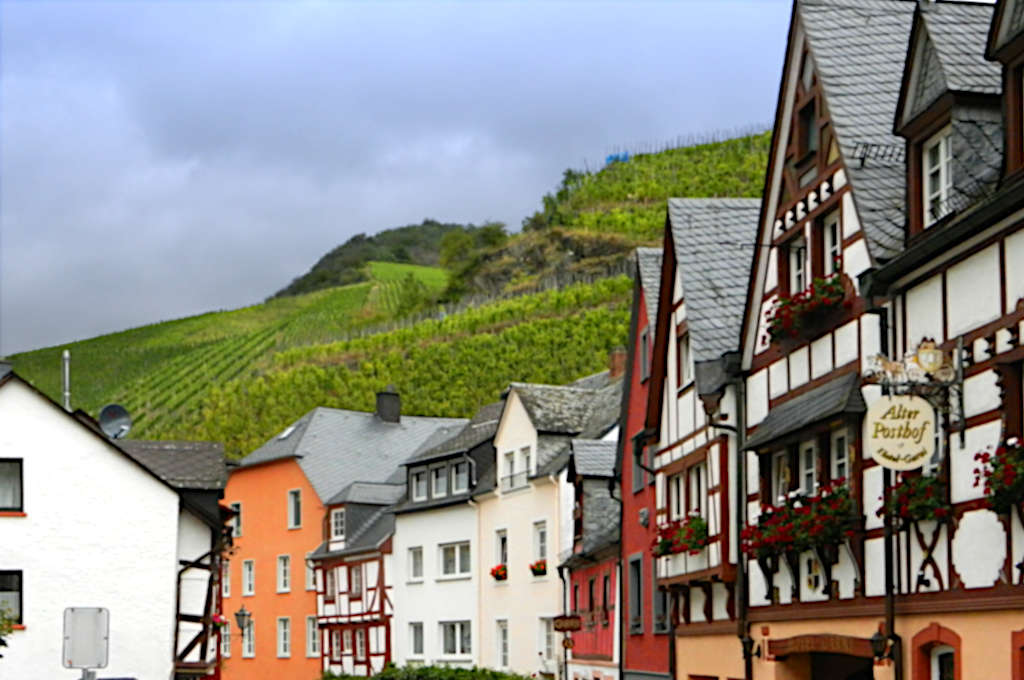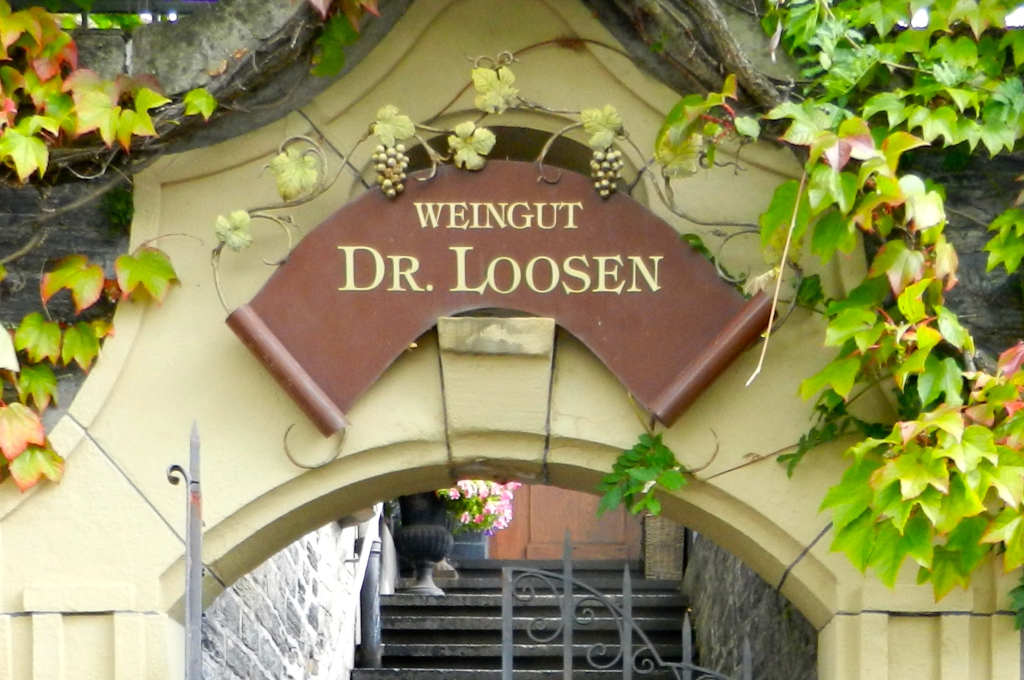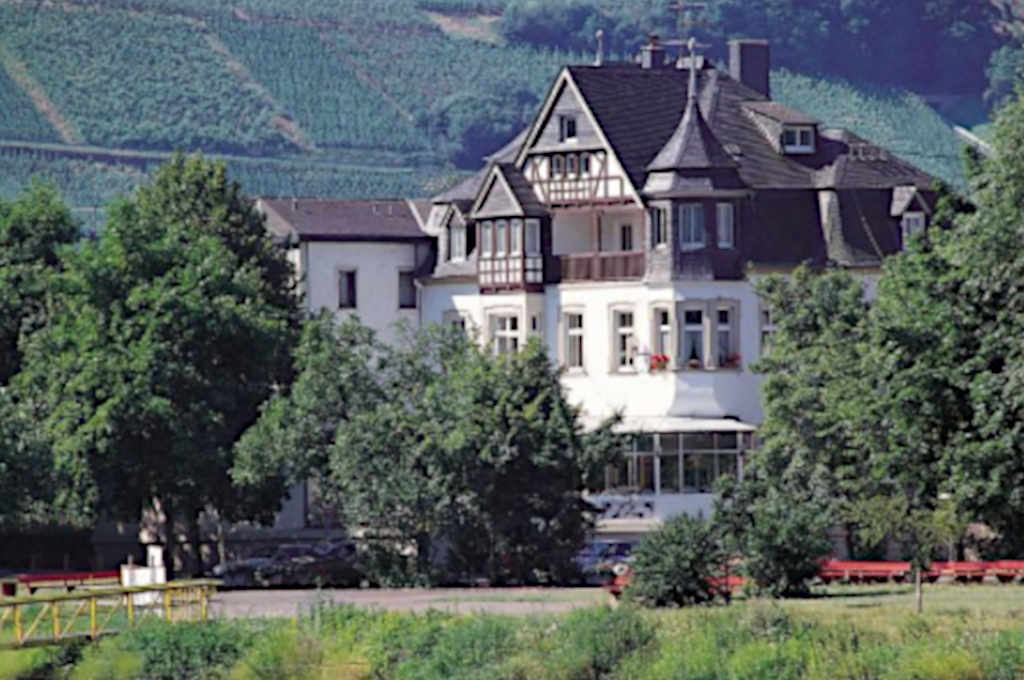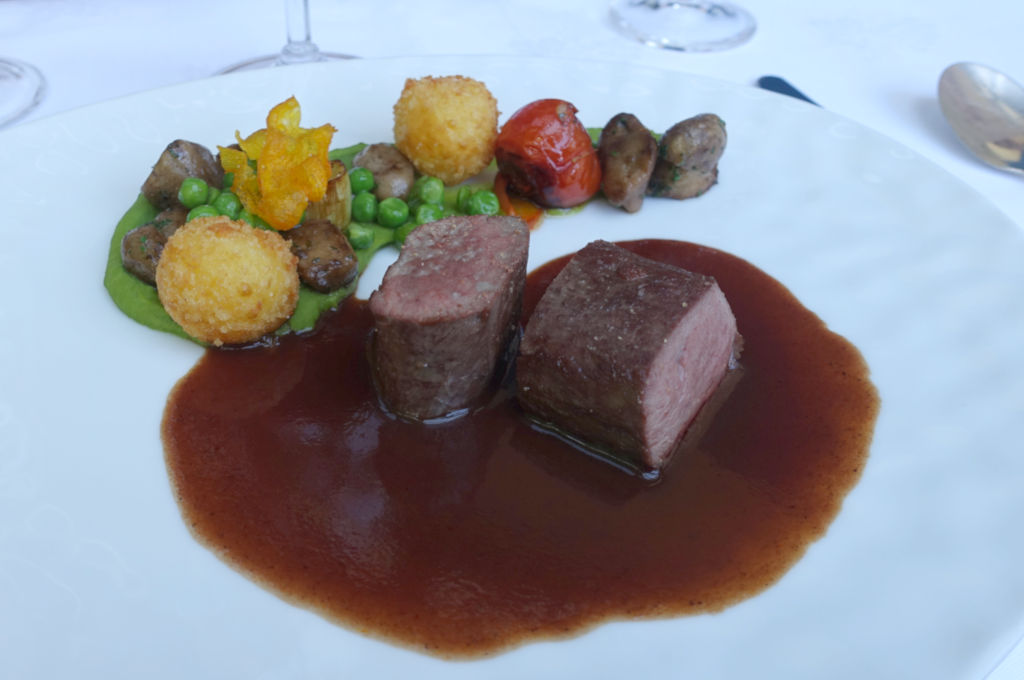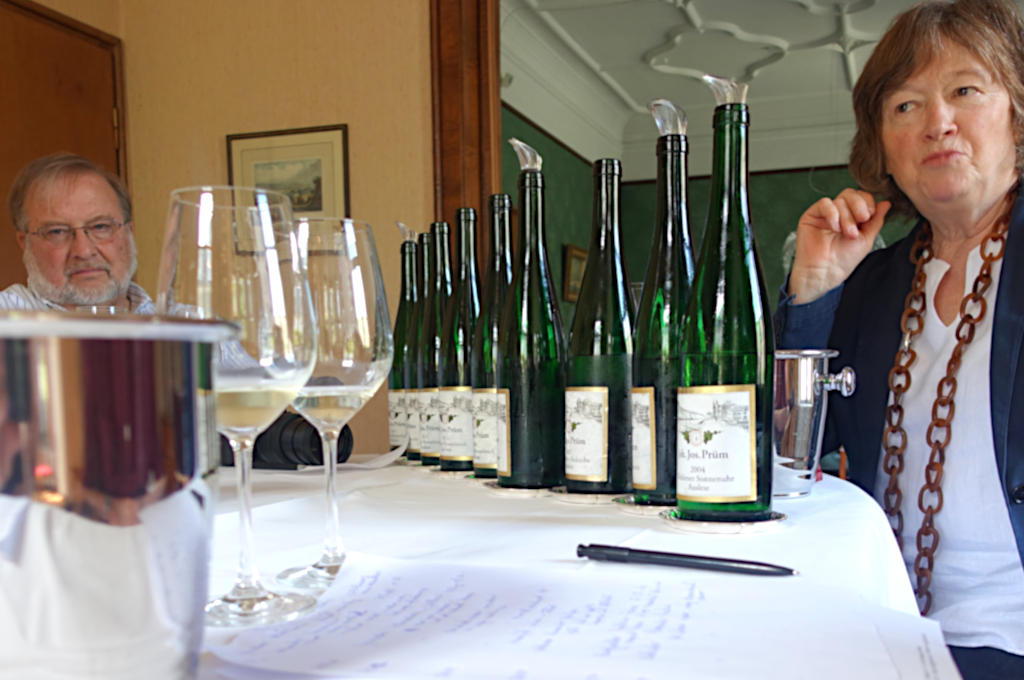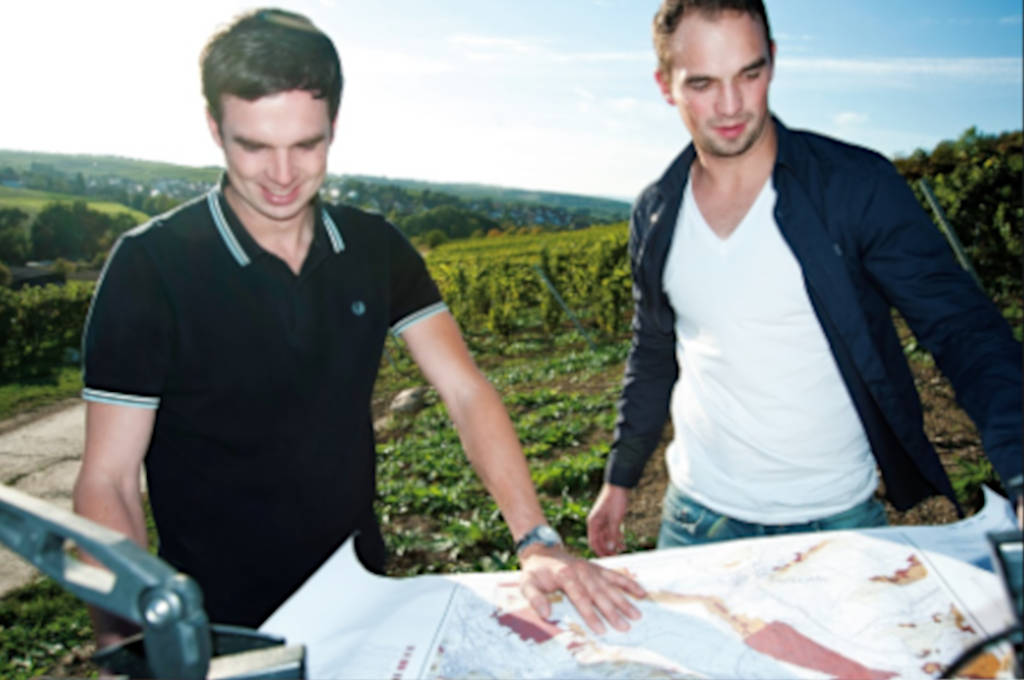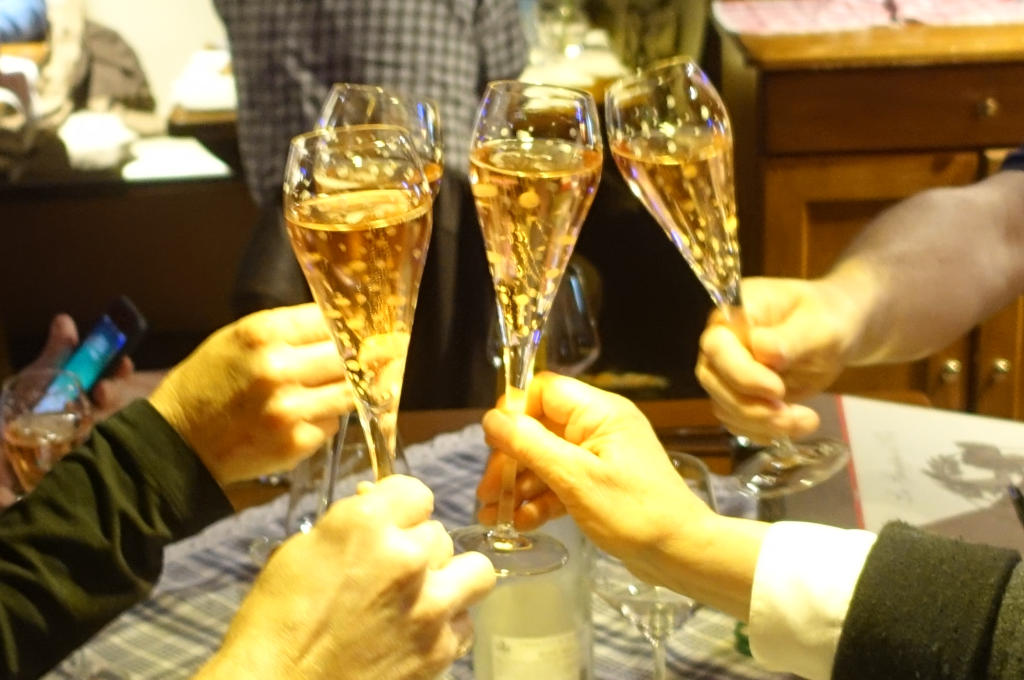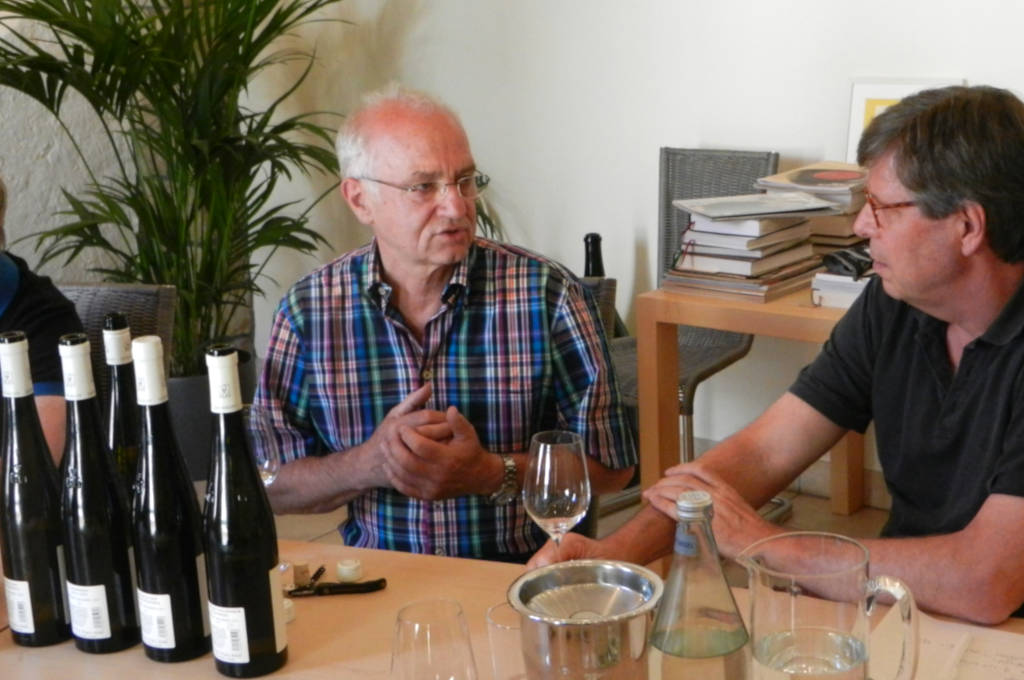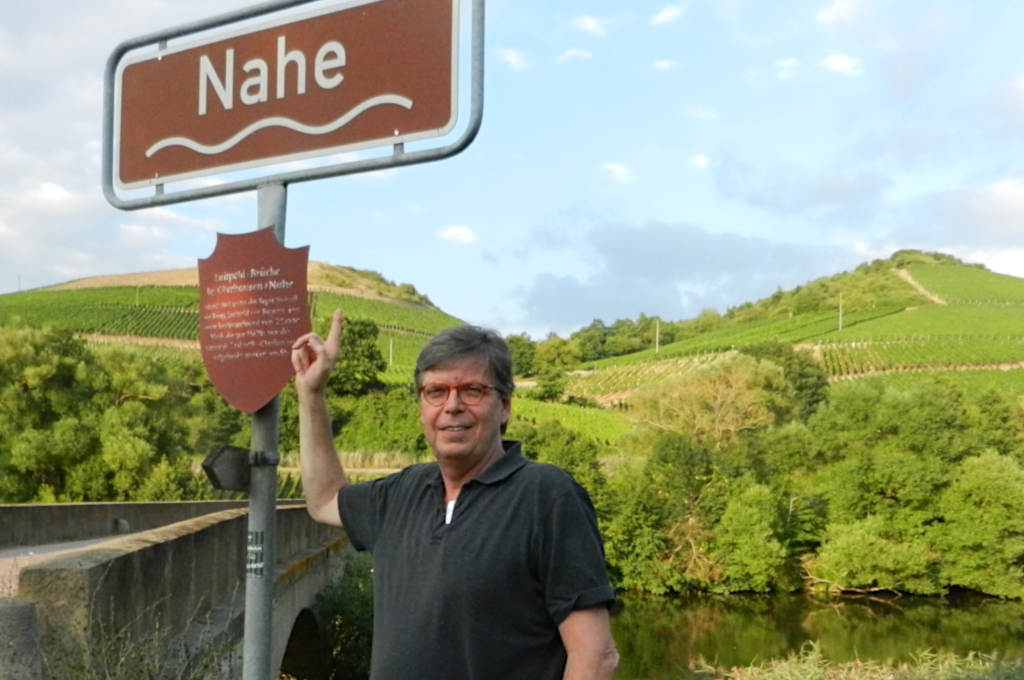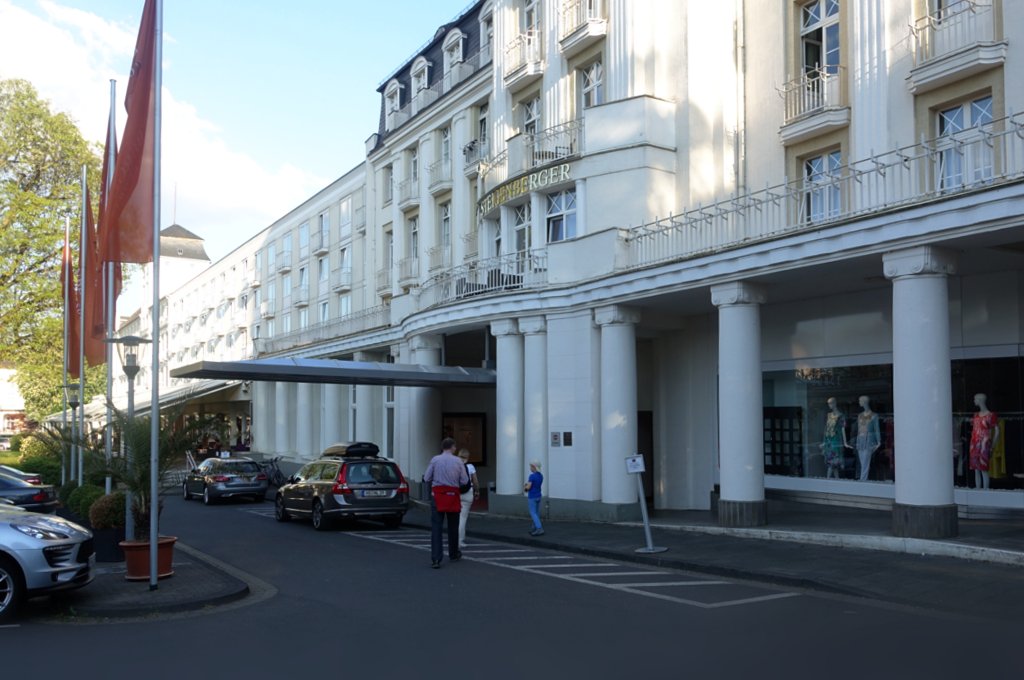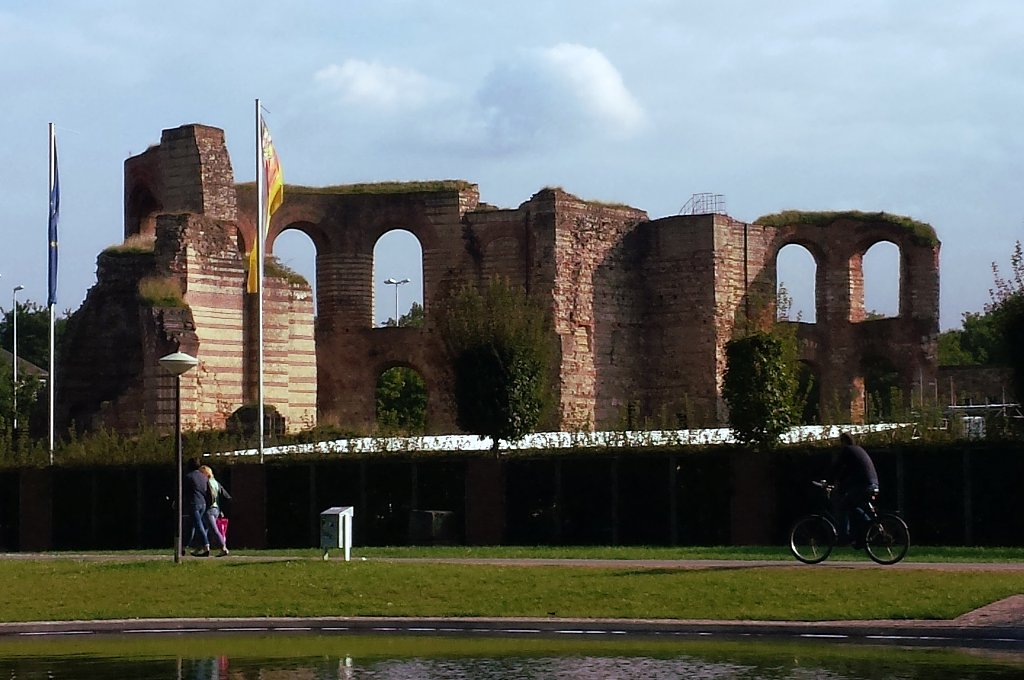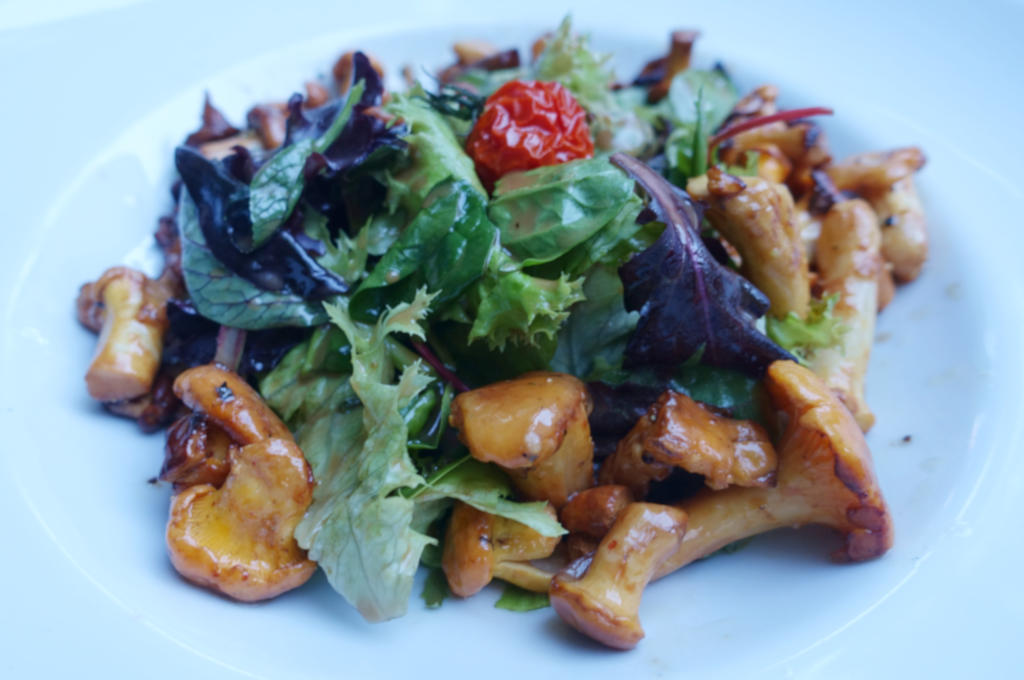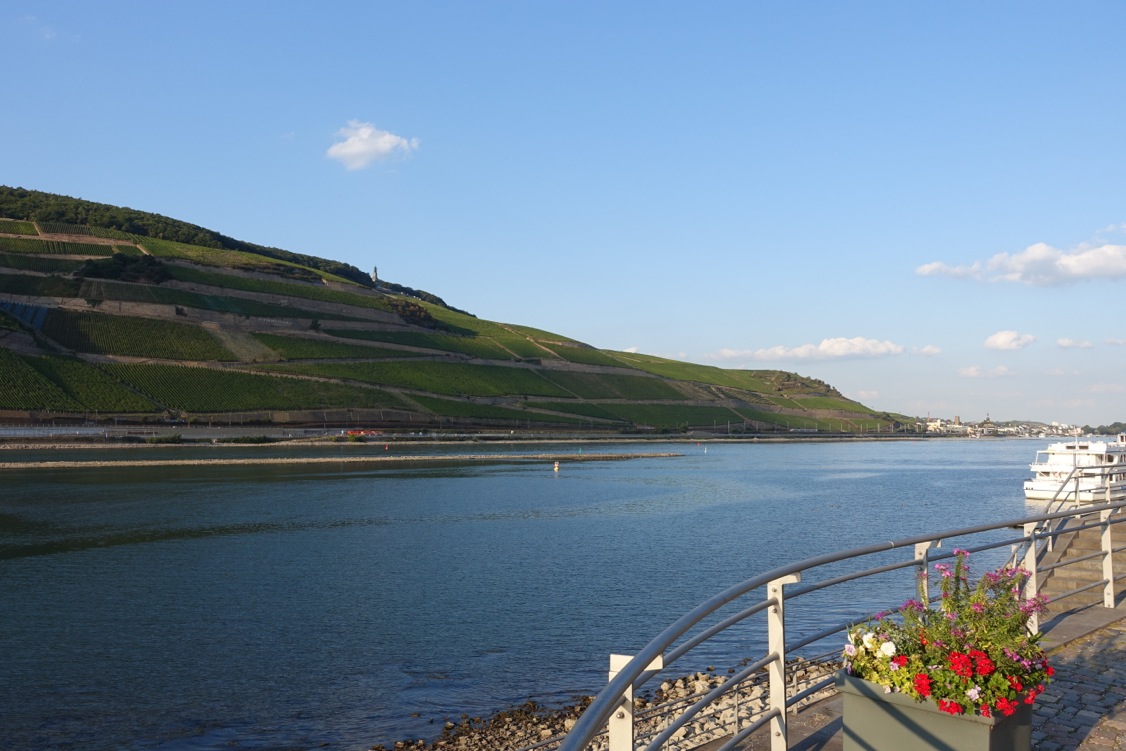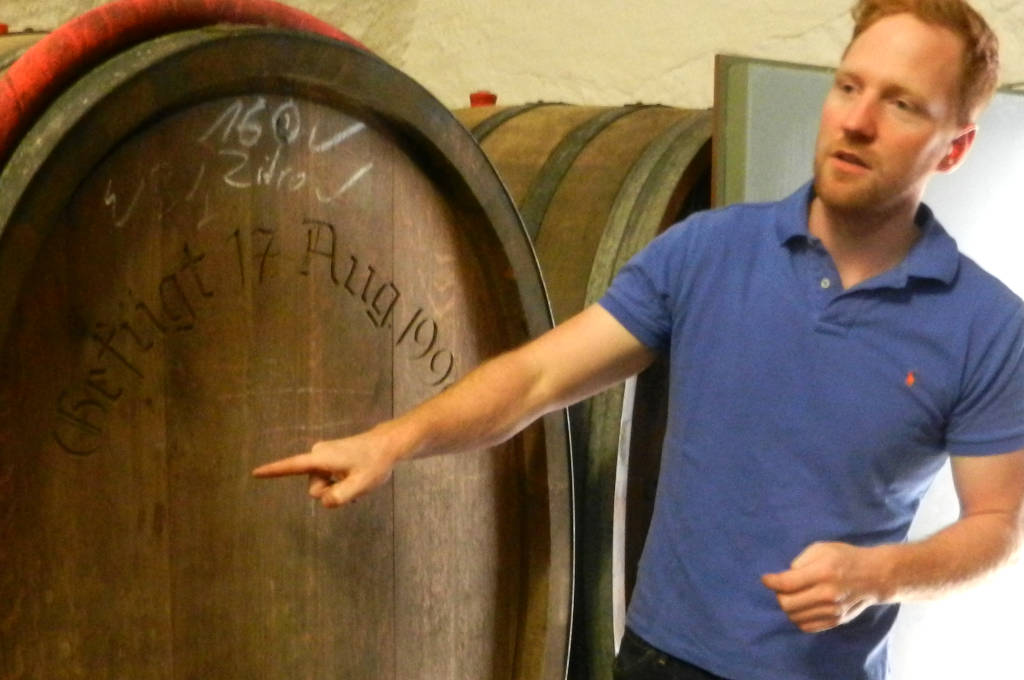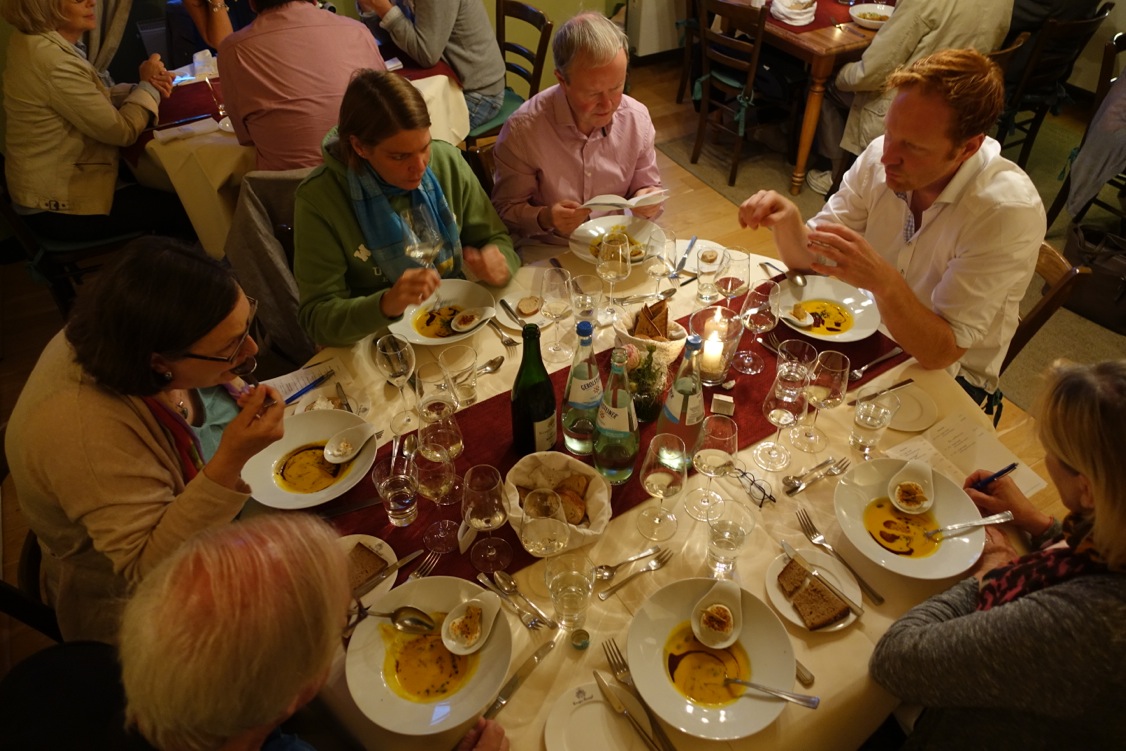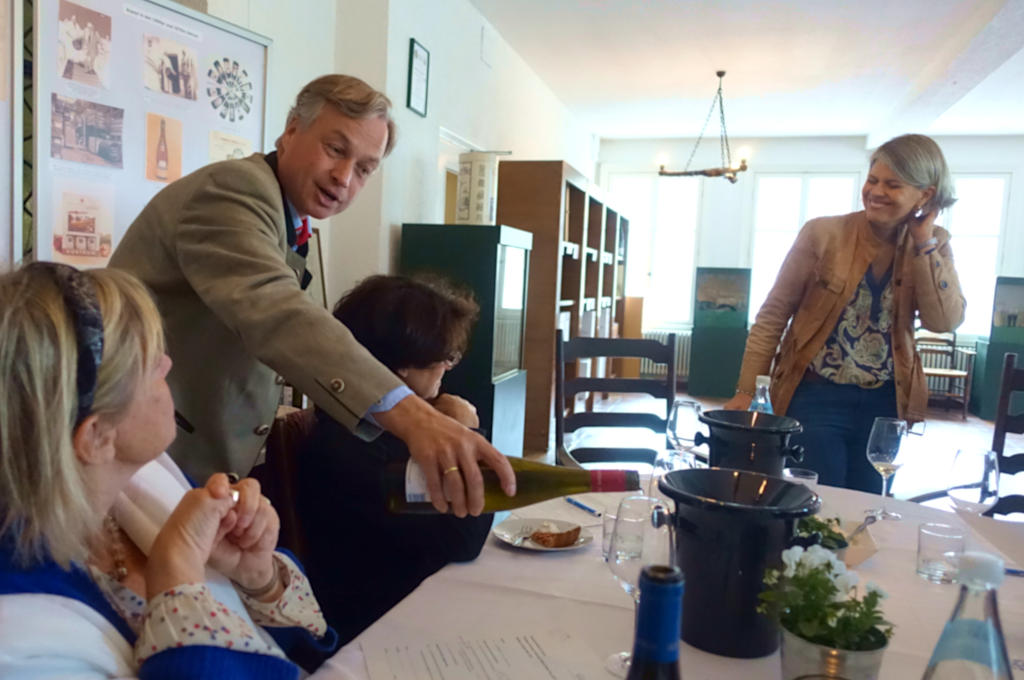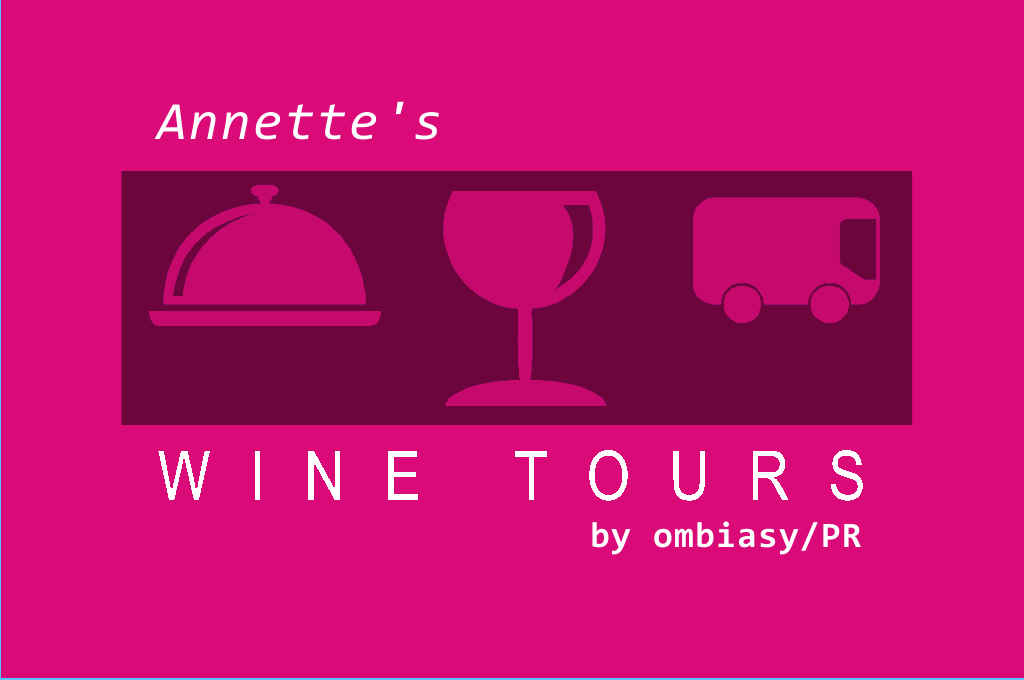The German Wine and Culture Tour to Iconic Wine Regions - Riesling country!
Spend 10 days visiting top wine estates in five wine regions, tasting fabulous Rieslings and some extraordinary Pinot Noir (aka Spätburgunder), meeting world-renowned wine makers, cruising on the romantic Rhein river, looking at dizzying steep vineyards along the Rhein and Mosel rivers, and delving deep into German history and culture:
| Rheingau • Mittelrhein • Mosel • Nahe • Rheinhessen |
See this year's itinerary below:
2024
Accommodation: 9 nights:
Night 1: Wednesday, August 28Hotel Radisson Blu, Schwarzer Bock, in Wiesbaden, this 4-star hotel steeped in history and the spa culture of Wiesbaden is situated in downtown Wiesbaden close to the Kurhaus, Casino, Opera and Theatre house and the Wilhelmstrasse, one of Germany`s finest upscale shopping streets. The building dates back to 1486 when it was constructed as a bath house taking use of Wiesbaden’s hot springs. |
Nights 2 + 3: Thursday, August 29 and Friday, August 30Hotel Kronenschlösschen in Hattenheim, a historic, very elegant 4-star hotel in picturesque old town Hattenheim. Built in 1894, the hotel is idyllically situated in a private park with mature trees and lush flower beds close to the Rhine river. |
Night 4: Saturday, August 31Mercure Hotel in Koblenz, a 4-star hotel beautifully located on the banks of the Rhein river, next to the Electoral Palace and 1 km from Deutsches Eck & historic Old Town. A cable car takes you up to fortress Ehrenbreitstein. |
Night 5: Sunday, September 01Hotel Moselblick in Winningen, a 3plus-star, modern family-run, beautifully located hotel right at the banks of the Mosel river. Here we are in the so-called ‘Terrassenmosel’, where the vineyards are dizzingly steep. |
Nights 6 + 7+ 8: Monday, September 02 + Tuesday, September 03 + Wednesday, September 04Deinhard's Hotel in Bernkastel-Kues, a brand-new 5-star modern boutique hotel in the heart of the Mosel Valley: a new interior in a beautiful historic 17th century building with a great wellness area. The rooftop lounge provides for gorgeous views over the Mosel river, the vineyards, and old town Bermkastel. |
Night 9: Thursday, September 05NH Hotel in Bingen, a 4-star modern business hotel beautifully situated at the confluence of the Nahe and Rhine rivers with stunning views across the Rhine to the vineyards and castles on the Rheingau side. |
DAY 1: Wednesday, August 28
EARLY AFTERNOONMeet & Greet in the Hotel Radisson, Schwarzer Bock, in Wiesbaden.
Introduction to the tour schedule and German wine. Our wine tour through the classic German wine regions starts with winery visits in Rheinhessen. Rheinhessen is Germany’s largest wine producing region with about 68,000 acres of vineyards. It is basically the wedge between the Nahe river in the west and the Rhein river to the north (where the Rhein flows east to west for 19 miles) and to the west (where the Rhein flows south to north). A variety of grapes grow here: Riesling, Silvaner, Weissburgunder (Pinot Blanc), Grauburgunder (Pinot Gris) and also great Spätburgunder (Pinot Noir). For a long time Rheinhessen was a rather underrated wine region but young, ambitious winemakers brought Rheinhessen back into the limelight. Today some of the most sought after and interesting wines are produced in Rheinhessen. |
AFTERNOONVisit at Weingut Braunewell in Essenheim, Rheinhessen.The Braunewell family can look back to 1655 as grape growers in Essenheim. The family’s roots however are in France. The religious wars that raged in France in the 16th and 17th century caused the family, who were Huguenots, to seek safety across the border in Rheinhessen. Today Stefan and Christian Braunewell are the 3rd generation making wine. They belong to the young generation of ambitious winemakers that brought the Rheinhessen wine region back into the limelight. They have 67 acres under vine in the Seltztal, an area about 8 km south of the Rhein is river. The vineyards are planted with the white wine varieties Pinot Gris and Riesling with 30% each, Chardonnay, Sauvignon Blanc and Scheurebe. Red wine varieties are Pinot Noir with 20%, St.Laurent, Syrah, Cabernet Sauvignon, Cabernet Franc, Merlot. The generally hilly Rheinhessen landscape takes a different shape in the Seltztal with steeper slopes and a somewhat unusual soil composition of limestone, limey marl, and loess. The white single vineyard wines are spontaneously fermented, the reds are bottled unfiltered. The Braunewell brothers also produce gorgeous “Winzer Sekt”, sparkling wines in the traditional method of a second fermentation in the bottle. The winery is a member of “Fair’n Green”, a seal for sustainability in viticulture. |
Visit at Winzerhof Thörle in Saulheim, Rheinhessen.The ancestors of the two winemaker brothers Christoph and Johannes Thörle were already producing wine in the 16thcentury. Christoph and Johannes took over management of the winery with 50 acres of vineyards in 2006 and have since become -similar to the Braunewell brothers- flagship producers in Rheinhessen. A blind Pinot Noir “Germany vs. Rest of the World” tasting in London in October 2011 ranked the 2008 Winzerhof Thörle Spätburgunder (Pinot Noir) Hölle as #3 overall and #1 of the German Pinot Noirs. Their US importer Bowlerwines describes the estate in a perfect way: “….the focus has been almost exclusively on the classic grape varieties Riesling, Pinot Noir, white Burgundy varieties and Silvaner. In the first few years the company was completely transformed. By intensifying manual work in the vineyards, rigorously reducing yields and harvesting by hand, the quality of the grapes has increased enormously. The wines polarize and fascinate, they offend, show character and origin. Thörle wines are deliberately independent, unvarnished and made with heart.” In 2019 Christoph and Johannes started the conversion to organic farming and after a transition period of three years, they are now certified organic. |
EVENINGWine dinner at restaurant Lumen in Wiesbaden.
This popular restaurant with a great wine menu showcasing an excellent selection of regional wines is located right in the city center on the market square and a 5 minute walk from our hotel. |
DAY 2: Thursday, August 29
|
The next two days we explore the Rheingau wine region, by many considered the jewel in the crown because of its legendary aristocratic history of world-famous wine estates. It is a fairly small wine region with about 8,000 acres of vineyards. The Rhein river originates in Switzerland and flows north where it empties into the North Sea in the Netherlands. The Taunus mountains force the Rhein river to make a sudden turn. Near Wiesbaden the Rhein turns west at a right angle and continues flowing east to west for about 19 miles before it turns north again. The Rheingau is the narrow strip on the south-facing slope of the Taunus along the Rhein river. We are here at 50° north of latitude but the huge body of water and the protective Taunus hills make the Rheingau perfect for grape growing. It is a predominantly Riesling region with a historic pocket of perfect terroir on the steep south-facing slopes around Assmannshausen for producing stunning Spätburgunder (Pinot Noir). |
MORNINGVisit at Weingut Eva Fricke in Eltville, Rheingau. |
Visit at Weingut Kloster Eberbach in Eltville, Rheingau.
The iconic Weingut Kloster Eberbach is closely linked to the history of the Abbey of Cîteaux and the abbey’s vineyards, the ‘Clos de Vougeot’ and the winemaking facility, the Château de Clos de Vougeot in Burgundy. Bernard of Clairvaux, a major leader in the reformation of the Benedictine Order (Cluny) which eventually led to the founding of a new order, the Cistercians, was abbot at the Abbey of Cîteaux. The Cistercian monks were the first “Colonialists” by establishing monasteries all around Europe. The monasteries sustained their living through farming and winemaking. Eberbach Abbey is a former Cistercian monastery, founded in 1136 by Bernard of Clairvaux as the first Cistercian monastery on the eastern bank of the Rhein river. By establishing the abbey he also founded the winery. In medieval times Eberbach Abbey was the largest winery in all of Europe with 750 acres of vineyards. Today Eberbach Abbey is one of the five State-owned wineries (the State of Hesse is its proprietor) and with 500 acres the largest winery in Germany. The estate’s holdings in highly esteemed vineyards in the Hessische Bergstrasse and the Rheingau wine region are unparalleled. We will visit the state of the art recently constructed new technical facilities of the winery built under the famous Clos Steinberg vineyard just down the road from the Abbey. Contrary to the Abbey of Cîteaux, the Château de Clos de Vougeot, and the Clos de Vougeot vineyards which are divided by roughly 80 owners, the Eberbach Abbey estate – the monastery buildings, vineyards, and winemaking facilities are still today an entity and Weingut Kloster Eberbach is still today a world-class winery. |
LUNCHat Klosterschänke at Eberbach Abbey.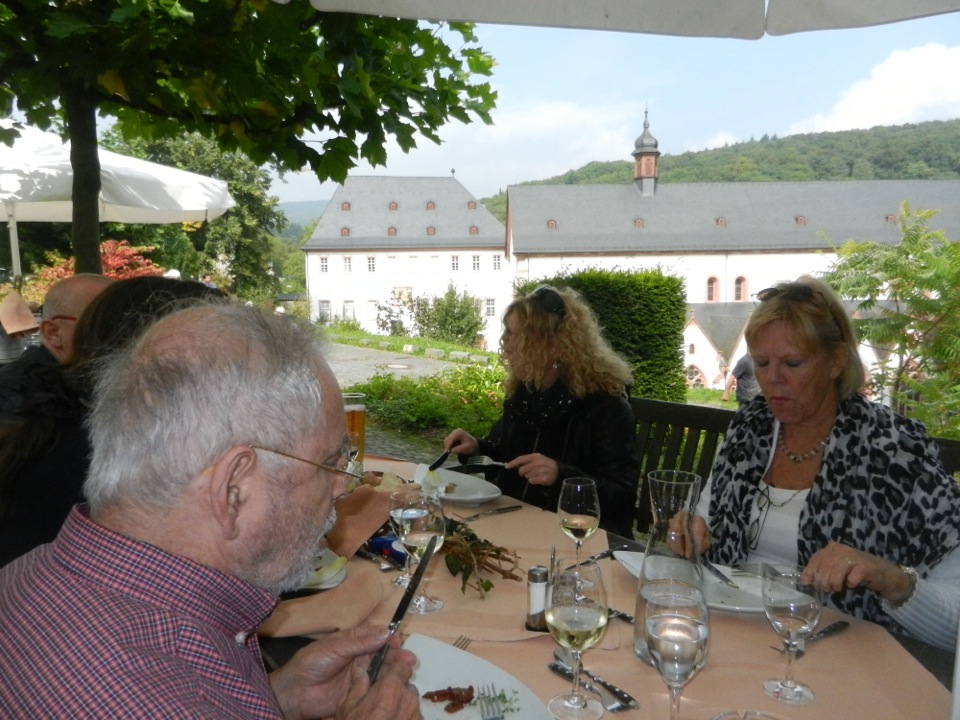
The restaurant is at the premises of the abbey. Hopefully we can sit outside with splendid views towards the abbey. |
AFTERNOONGuided Tour of Eberbach Abbey.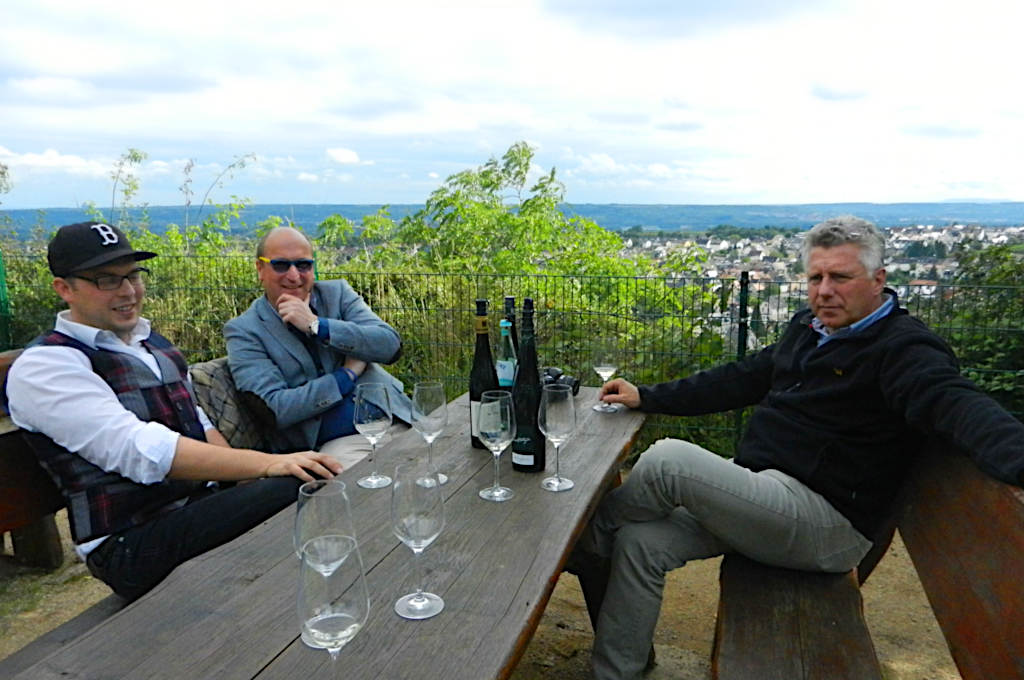
Kloster Eberbach is one of Europe's best-preserved and important medieval monasteries. Its Romanesque and Gothic buildings are very impressive. We will get an in-depth visit, including a visit of the old monk’s dormitory where every year the famous auction of premium German wines takes place. A very special treat will be a peek into the treasure chamber, where century old wine bottles are still stored and where the movie “The Name of the Rose” with Sean Connery was filmed in 1986. |
| Visit at Wein- und Sektgut Barth (VDP) in Hattenheim, Rheingau.
The Wine and Sekt Estate Barth was founded in 1948 by Johann Barth, grandfather of Christine Barth and her husband Mark Barth, the current generation at the helm of the winery. In 1978 Norbert Barth, the current senior owner, made the decision to produce the first sparkling wine at the estate. In the early 1990s, the winery facilities were expanded, and a Sekt (German word for sparkling wine) manufactury was completed. Since then the entire Sekt production takes place in-house. All Sekts are bottle fermented in the méthode traditionelle starting with base wine production, subsequent bottling, bottle fermentation, hand-riddling, and disgorging. All Sekts remain on the lease between 24 and 36 months. In 2010 Barth released the first ever German sparkler made from a Premier Cru base wine. The novelty was named Barth Primus, and put Barth on the map for the serious Sekt lover. The Barth wine estate has 50 acres of vineyards which are mainly (83%) planted with Riesling, as is common throughout the Rheingau. Their wines and Sekts are among the best of the best in Germany. |
EVENINGCheck in at Hotel Kronenschlösschen in Hattenheim, Rheingau.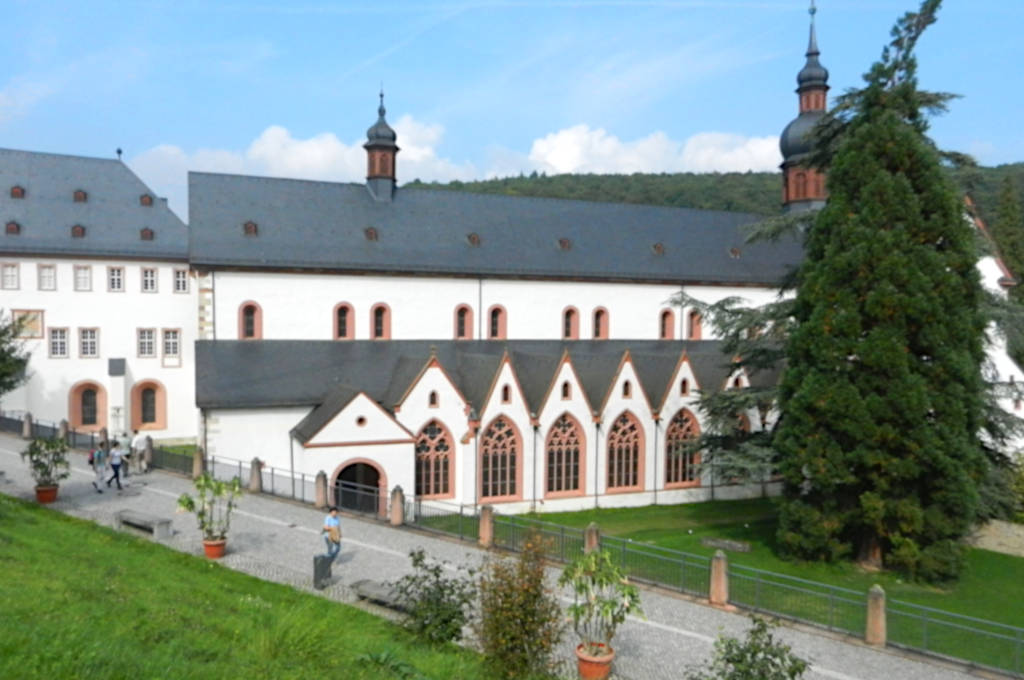
Enjoy this historic place where some German politicians met to discuss the shaping of a new constitution for the country after the end of WWII. |
|
Dinner with wines of Weingut Balthasar Ress (VDP) at restaurant Kronenschlösschen. Hopefully the weather will be perfect and we can have our dinner outside in the romantic park. Roland Gorgosilich is the highly acclaimed chef at the Kronenschlösschen and the wine menu has been named 'Best Wine List in Germany' by Gault Millau.
|
DAY 3: Friday, August 30
MORNINGVisit at Weingut Georg Breuer in Rüdesheim, Rheingau.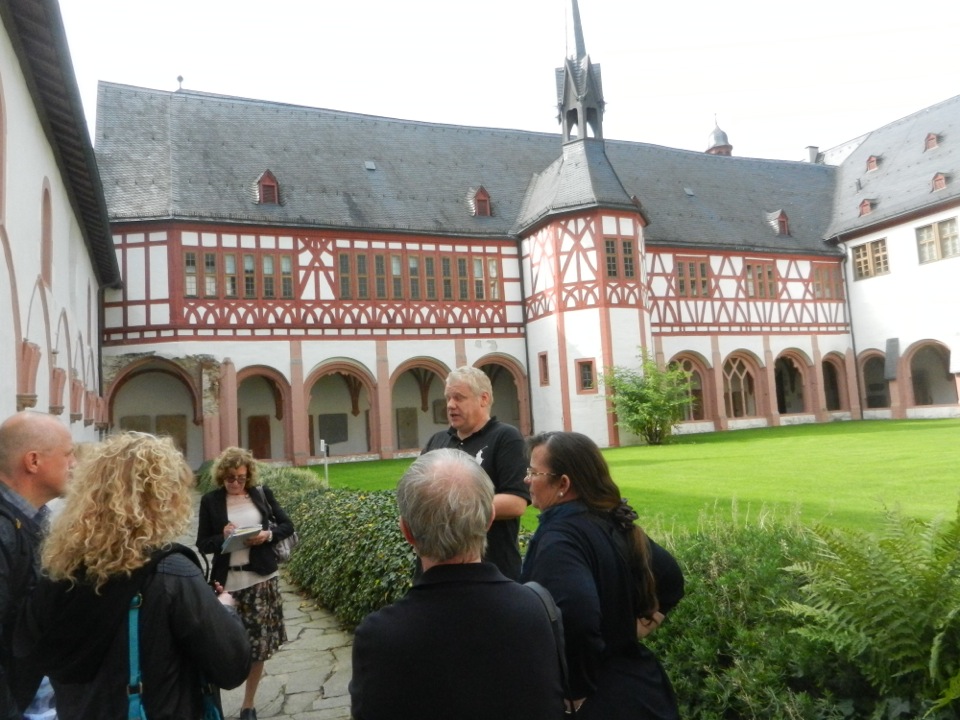
Weingut Georg Breuer was founded in 1880 by the Hillebrand and Scholl families. In the early 20th century Peter Breuer acquired the estate and today it is the fourth generation Theresa Breuer who is running the winery. In the 1980s Bernhard Breuer, Theresa’s father – was one of the key members of the CHARTA organization, which was founded to promote drier wines and higher quality standards for the Rheingau Rieslings. Early on Bernhard Breuer was very critical of the wine law of 1971 which made the sugar content of the grapes at the point of harvest the quality measure. He was a strong advocate for a terroir – a vineyard based classification as measure of quality. This raised the quality standard in the Rheingau and beyond. It took more than 30 years before a new wine law passed in 2021 and Bernhard Breuers vision became reality. Theresa farms 100 acres of vineyards with the majority in the three greatest sites in Rüdesheim: Berg Schlossberg, Berg Roseneck and Berg Rottland and the Moniopol site Nonnenberg in Rauenthal, right at the opposite end, the far east end of the Rheingau. Theresa drastically reduces yields to produce top quality wines: yields for the wines from premier and grand cru sites are 15-25 hl/ hectare and 45 hl/ hectare for the Estate and Village level wines. The vineyards are farmed using organic methods and are certified by Fair N Green. |
Visit at Weingut Peter Jakob Kühn (VDP) in Oestrich, Rheingau.
This wine estate was founded around the start of the 18th century. Today it is run by the 12th generation of the family, Peter Bernhard Kühn. I quote Bernhard’s mother Angela Kühn: “Only by maintaining our philosophy and through the knowledge that quality and sustainability are inseparable, has our winery survived through the centuries. On this basis we decided in 2004, to achieve a certification as ecological, biodynamic winery. The expectation we set in our own quality also manifests itself in our memberships in the VDP (Association of Premium German Wine Estates), Demeter, the association for organic agriculture based on anthroposophical principles, and the association of international biodynamical wineries : ‘La Renaissance des Appellations’.” They farm 50 acres in top vineyard sites in Oestrich, Mittelheim, Hallgarten. 95% is planted with Riesling, 5% with Pinot Noir which is used in their Sekt production. For years this wine estate has been continuously been placed by international wine journalists in the very top tier of German wineries. |
LUNCHwith wines of Weingut Schloss Johannisberg (VDP) at Schlossschänke Johannesberg in Geisenheim.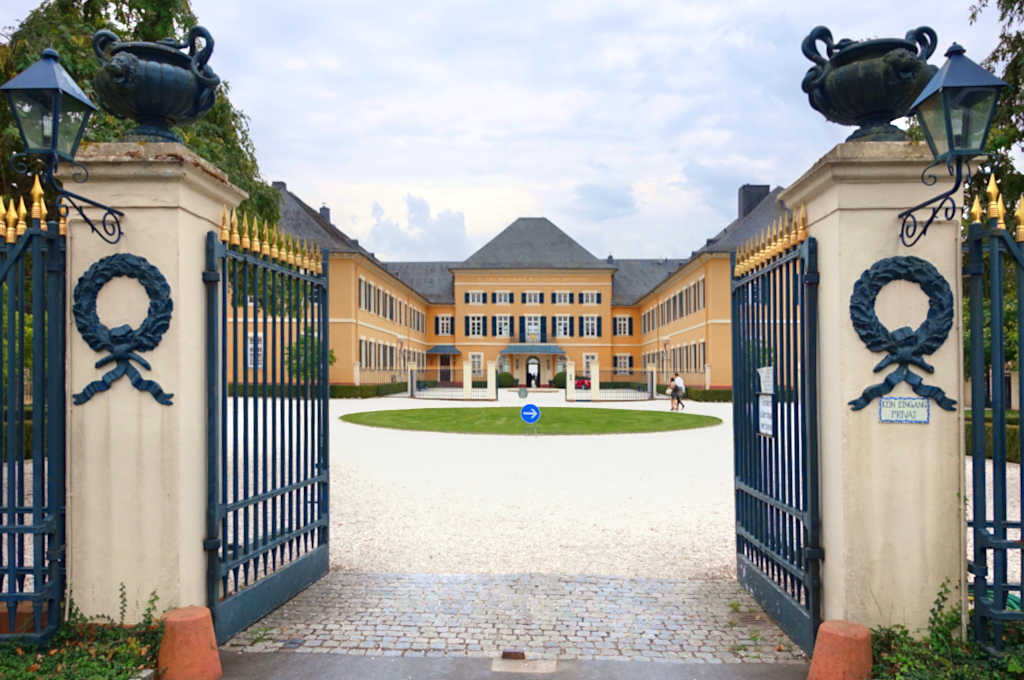
Schloss Johannisberg is the world’s oldest Riesling wine estate going back 900 years and it was here that the “Spätlese” was accidently discovered. For many centuries the estate was owned by the Prince-Abbot of Fulda, but changed hands several times during the Napoleonic wars and subsequent secularization. In 1816, Austrian Emperor Francis II, gave the estate to his Foreign Minister, Prince von Metternich, as a thank you for his successful negotiations in the reorganization of Europe during the “Congress of Vienna”. The last resident of the Metternich family at Schloss Johannisberg, Tatjana Princess von Metternich was a patron of the arts in the Rheingau and beyond and revived the castle to its former gory after the destructions during World War II. After her death in 2006, the Oetker family (yes, that's the one that produces baking helpers and puddings) bought the estate. Current estate manager is Stefan Doctor who fabulously manages the domaine and honors the long traditions at Schloss Johannisberg by focusing rigorously on quality. The Johannisberg wines show substance, considerable volume, and a spicy fruitiness paired with pronounced acidity. We will enjoy the wines with lunch at the Domaine’s wine tavern overlooking the vineyards and the Rhein river. |
AFTERNOONVisit at Weingut Schloss Vollrads (VDP) in Oestrich-Winkel, Rheingau.Schloss Vollrads is one of the oldest and most iconic wine estates of the world. The impressive tower house, built in 1330, was constructed on the foundation of a Roman defense tower. From the early 1300 until 1997 the estate belonged to the Count von Greiffenclau family. The family’s history is deeply rooted in viticulture. According to archives in Mainz they sold wine as early as 1211. Today 200 acres of vineyards, planted 100% with Riesling belong to Schloss Vollrads. Some of the vineyards were already in the possession of the Greiffenclau family in 1300. In 1997 – in view of unsurmountable debts, Count Matuschka-Greiffenclau committed suicide and since then the Nassauische Bank owns the estate and does an excellent job honoring the legacy of the estate and making top quality wines. |
Cellar visit and tasting at winery Kaufmann(VDP) in Hattenheim, Rheingau.
Winery Kaufmann was founded by Hans Lang in 1953, in the post World War II era. The son of the founder converted the winery to organic viticulture and became member of the Ecovin Association for Organic Viticulture in 2012. With no heir interested in continuing working in the winery in 2013 the Lang family sold the estate and Urban Kaufmann and Eva Raps purchased the winery. Urban comes from Switzerland and ran one of the best Appenzeller cheese companies. Eva used to be the Managing Director of the VDP. I quote Urban:”To produce top cheeses was important to me, today Riesling, white Burgundy grapes and Pinot-Noir are the focus in my life. There are magic moments to take care of these grapes in the vineyard and in the cellar from the fermentation phase until bottling.” And Eva:”To implement the VDP’s philosophy of quality management right here in my own winery is an awesome experience”. Dry wines have a long tradition at the estate and account for 90% of the portfolio. Eva and Urban took the conversion to environmentally friendly winemaking to yet another level: in 2017 they were certified biodynamic by Demeter. |
EVENINGand dinner on your own.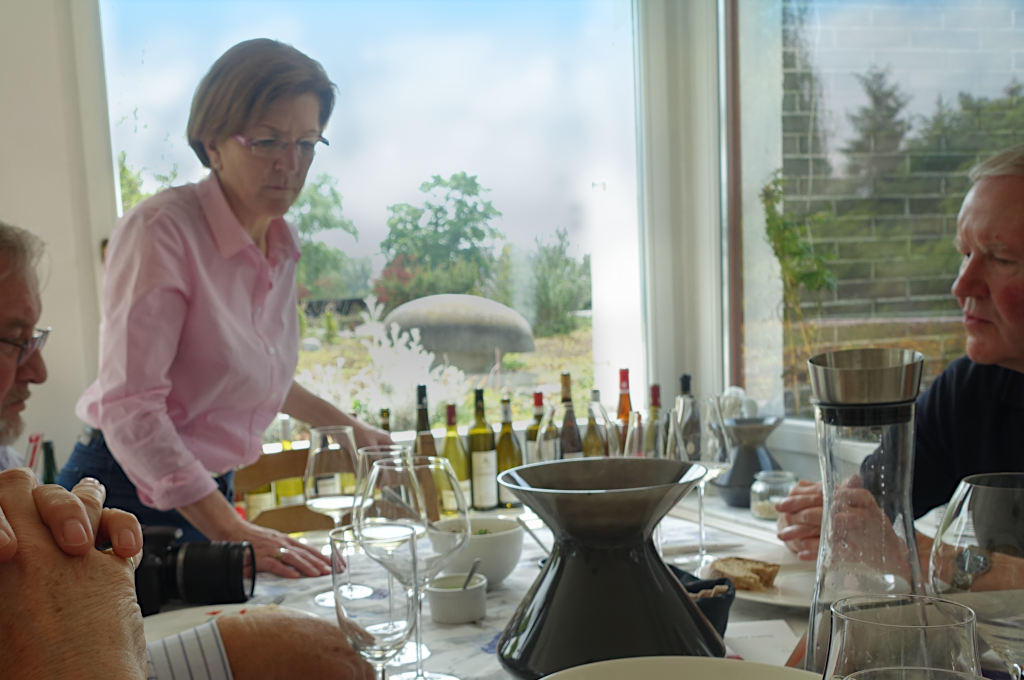
It is Friday and the wine tasting booth on the banks of Rhein river is open. There is a path under the street to get from our hotel to the river. Small bites and plates are served and it is a true pleasure and very relaxing to sit and sip and observe the flow of the mighty river. |
DAY 4: Saturday, August 31 |
| Today in the afternoon we explore the Mittelrhein wine region, the wine world’s most spectacular scenery with medieval villages and castles and ruins crowing the top of the hills like pearls on a string. This is the 65 km stretch of the romantic Middle Rhein Valley with vineyards on vertiginous steep slopes on both sides of the river between Bingen and Bonn. With 1150 acres under vine it is Germany’s second to smallest wine region, planted predominantly with Riesling. |
MORNINGVisit at Weingut Spreitzer (VDP) in Oestrich, Rheingau.
This is one of the oldest wineries in the Rheingau, founded in 1641. Today brothers Bernd and Andreas Spreitzer manage the estate and farm 85 acres of vineyards, of which 95% are planted with Riesling and the rest with Pinot Noir. I let Bernd Spreitzer speak: “Viticulture practices are as natural as possible at Weingut Spreitzer and include alternating cover crops of herbs, greens, and lentils in the summer with grains in the winter. The wines are vinified in the cellar that was built in 1743. We strive to maintain fruit and finesse by cleaning the must by gravity for 24 hours after whole-cluster pressing, then allowing the wines to rest on their gross lees and only filtering once. Mostly ambient yeasts are employed for fermentation in both temperature controlled stainless steel and 1200 liter casks of German wood, called Stückfass.” With their wines always relatively long on the lees before bottling, I hope we will be able to taste some still unbottled wines. |
Departure from the Rheingau region and drive to the Mittelrhein wine region.
This journey involves a ferry ride across the Rhein river. There is no bridge across the Rhein for some 70 miles between Mainz and Koblenz to not destroy the beauty of the Rhein valley.
|
Visit at Weingut Lanius-Knab (VDP) in Oberwesel, Mittelrhein. |
LUNCHwith wine at Straußwirtschaft Lanius-Knab.
The Lanius family operates a ‘Straußwirtschaft’, a seasonal tavern where they serve home cooked, traditional food. Of course we will enjoy the Lanius wines with the meal. |
AFTERNOONVisit at Weingut Toni Jost (VDP) in Bacharach, Rheingau.
For over 180 years, the Jost family has been cultivating vineyards in Bacharach. The family’s focus was always on acquiring vineyards in Bacharach’s top site, the so-called Hahn. Today, five generations later the “Hahn” almost exclusively belongs to the Jost estate. Current owner is Peter Jost together with his daughter Cecilia, who is also the winemaker. The 37 acres of vineyard land are planted mostly with Riesling (80%). 15% is planted with Pinot-Noir, and the rest with Pinot-Blanc, and Dunkelfelder (a cross breed between Farbertraube and Blauer Portugieser, however more sophisticated DNA tests show different parents). One third of the vineyards are located in the Rheingau region, in Walluf and Martinsthal. Because of these vineyards in the Rheingau the estate has been a member of the VDP Rheingau since 1989. In 1987 Peter Jost was founding member of the VDP Mittelrhein. |
Boarding the boat in Bacharach for a cruise on the Rhein river.
Cruise on the Rhein, passing the famous Loreley Rock and the slopes of the Mittelrhein wine region. Time to indulge in the breathtakingly beautiful view of the Rhein River and its banks dotted with castles, fortresses, and ruins dating from the middle ages. The Middle-Rhine valley is listed as a UNESCO World Heritage site. |
EVENINGCheck in at Mercure Hotel in Koblenz.
Our Rhein river cruise takes us to Bad Salzig, where we debark and continue with our bus to Koblenz.
|
The Evening and dinner are free for you. |
DAY 5: Sunday, September 01
MORNINGCablecar across the Rhein river to Festung Ehrenbreitstein.Germany’s most modern cable cars take you from the city’s Konrad-Adenauer-Ufer river bank (next to the Hotel Mercure) all the way up to the summit station of Ehrenbreitstein Fortress. The cable car transports up to 7,600 passengers per hour. With its panoramic cabins, it promises an unforgettable trip over the Rhein and is surely one of the greatest attractions in the Upper Middle Rhine Valley. Enjoy breathtaking views, ascend over 112 meters and discover the beautifully city of Koblenz and the Deutsches Eck from above.
|
Guided tour of Festung-Fortress-Ehrenbreitstein in Koblenz.
Ehrenbreitstein is the name of the hill on which the fortress sits. This hill has a perfect position overlooking a strategic point: traffic of two major “highways”: the confluence of the Mosel and Rhein rivers. This hill was first settled in the 4th century BC. During the Roman settlements in the 3rd to 5th centuries AD a fortification was constructed. Later under Corolingian rule a castle was constructed. In the 16th century the castle was fortified to withstand attacks with weapons using the latest invention: gunpowder. The French were always eying to incorporate the left bank territory of the Rhein into their portfolio. During the following centuries the fortress was attacked by the French multiples times but never conquered. After the Napoleonic wars, the Congress of Vienna in 1815 decided to give the “Rheinland” to Prussia. The fortification of Koblenz became a priority for the Prussians because of its strategic importance. After WW I this area was occupied by the Americans and Ehrenbreitstein became the US army headquarters. The American General Henry Tureman Allen, thought Ehrenbreitstein to be of historical and artistic value, hence the fortress escaped being destroyed. After 1923 the Americans handed this area over to the French who eventually gave it back to Germany. After WW II this area became the Federal State of Rheinland-Pfalz. Ehrenbreitstein has fascinated multiple artists. The most important is the painting by J.M.W.Turner, completed in 1835: “View of Ehrenbreitstein”. This painting is part of a private collection and has an estimated value of US $18.7–31.2m according to sotheby.com. |
LUNCHLunch at hotel-restaurant Lellmann in Löf.
We will enjoy lunch right on the banks of the Mosel river. |
AFTERNOONGuided tour of Burg Eltz - Eltz Castle.
Eltz Castle is a truly fairy-tale medieval castle surrounded by dense forests in the hills above the Mosel river. It was built more than 850 years ago by the Eltz family and is one of the few castles that have never been destroyed. Here you can experience the Middle Ages and nature in its purest form. Today the Countess and Count Eltz, descendants of the same family that lived here in the 12th century - 33 generations ago - live here and are doing everything to preserve their ancestral home.
|
EVENINGCheck in at hotel Moselblick in Winningen, LOWER MOSEL.
|
Dinner at restaurant Moselblick in Winningen.
The |
DAY 6: Monday, September 02
| The next three days we explore in depth the eponymous Mosel Valley (the Lower, Middle, and Upper Mosel) and its world-renowned Riesling wines. We will visit wine estates famous around the globe as well as hidden champion estates. The Mosel is from the international view point the most famous wine region in Germany known for its Rieslings made in all styles: from bone dry to sticky sweet. The Mosel river, which gives the wine region its name originates in France on the western side of the Vosges mountain range and once having crossed into Germany, the river takes multiple hair-pin turns before it empties into the Rhein in Koblenz. With over 60% planted with the Riesling grape, this is Riesling country! However we will also come across some beautiful Pinot Noir wines! With a vineyard area of 23,000 acres the Mosel wine region is the 5th largest German wine region. The Mosel wine region is divided into three distinctively different regions: the LOWER MOSEL, the section closest to the confluence of the Mosel and Rhein rivers in Koblenz, the MIDDLE MOSEL, the stretch between Cochem and Trier, and the UPPER MOSEL straddling the border with Luxembourg. |
MORNINGVisit at Weingut Knebel (VDP) in Winningen, LOWER MOSEL.
Here we are in the LOWER MOSEL, also called: ‘Terrassenmosel’ named after the dramatically steep slopes where the vines are planted on terraces. The very quartzite, clayish slate whose color varies from gray to yellow-brown gives a distinctive minerally taste to the Rieslings. The roots of this winery go back to 1642. Today Matthias Knebel is managing the winery. Matthias went through difficult times and had to learn his craft on a fast track. His father Rheinhard passed away unexpectedly in 2004, just as Matthias was to begin his studies at Germany’s top enological university, Geisenheim. These were sad, difficult times for his mother, and for Matthias. His mother carried on and took charge of the estate for the next four years. In 2008, Matthias returned from his studies and, together with interns and temporary staff, began carrying out his father’s legacy. By 2016, his work and vision had earned the estate VDP membership. Blessed with a collection of old vines, some ungrafted, Matthias relies on fewer canes, natural competition, lower yields, and rigorous selection. In 2012, he gave up all chemical herbicides in the terraces and the estate hasn’t used fertilizer in decades. The Knebels have parcels in legendary sites among lovers of steep-slope Riesling such as Uhlen, Röttgen, Hamm, Brückstück. |
Sightseeing stop at the 'Moselschleife' in Bremm.
The Bremmer Calmont (nickname: ‘Mount Everest’ of the vineyards) is the steepest vineyard world-wide with an almost 70° inclination. From this sightseeing point we have a breathtaking view over the almost 180° bend of the Mosel river.
|
LUNCHat Heim's restaurant at Hotel Reil in Reil.Christoph Heim is a highly acclaimed chef. The restaurant was awarded a Bib Gourmand by the Michelin guide and highlighted in the German Life Style magazine ‘Feinschmecker’. |
|
We have arrived in the MIDDLE MOSEL valley. The soils are Devonian slate in the steep sites and sandy, gravelly soils in the flatlands. |
AFTERNOONVisit at Weingut Clemens Busch (VDP) in Pünderich, MIDDLE MOSEL
The winery dates from 1802. In 1986 Rita and Clemens Busch took over. Today son Florian is also part of the winemaking team. The Busch family lives near the banks of the Mosel in a beautiful, restored half-timbered house built in 1663. Because flooding is a constant danger, the vaulted cellar, built in the 1970s, lies nearby, on higher grounds at Clemens’ parents’ home. In a region most known for the noticeable residual sugar and low alcohol of its wines, Clemens Busch’s focus is on dry premium Rieslings that can compete with the best dry whites in the world. He also produces off-dry wines as well as powerful, complex noble sweet wines. He is one of the pioneers of biodynamic viticulture in Germany. As early as in 1984 they began using organic viticultural practices, converted to biodynamic winemaking and have been certified biodynamic by respect since 2015 and are also certified Fair N Green. Rita or Clemens will give us the tour and will also take us by boat across the Mosel River to show us their vineyards which are among the steepest in the Mosel region. |
Visit at winery Dr. Loosen (VDP) in Bernkastel-Kues, MIDDLE MOSEL. |
EVENINGCheck in at Deinhard's hotel in Bernkastel-Kues, MIDDLE MOSEL.
Enjoy this beautiful hotel and the phenomenal location right at the Mosel river. |
Dinner at Deinhard's (beverages on your own).
|
DAY 7: Tuesday, September 03
MORNINGVisit at winery Jos.Jos. Prüm (VDP) in Bernkastel-Wehlen, MIDDLE MOSEL. |
Visit at Weingut Max Ferdinand Richter in Mülheim an der Mosel, MIDDLE MOSEL. |
LUNCHat restaurant Weisser Bär in Mülheim, MIDDLE MOSEL.
|
AFTERNOONVisit at Weingut Hermann Ludes in Thörnich, MIDDLE MOSEL.Weingut Hermann Ludes has flown under the radar for decades for a number of reasons. First, the village Thörnich is located in an upper-section of the Mosel, far away from the famous ‘Hollywood Mile’ of the Mosel. Further, Thörnich is legendary for shaping wines that are raw and tensile; the wines of Hermann Ludes especially can be brutally structured. In other words these are not easy wines” says importer Vom Boden, who recently started to bring wines of Weingut Ludes to the US. I also quote current manager and winemaker Julian Ludes: “ Sometimes it seems to me that my uncle prepared his winery just for me. My family has been at home in Thörnich for centuries, the Ritsch is our ‘home mountain’. And although we have always grown wine and been a member of the renowned auction rings, it was Uncle Hermann who laid the foundation for uncompromising quality. He exchanged, bought and leased the best plots - the filet pieces with old vines and particularly rocky soil. His wines are timeless and therefore a role model for me. In 2020 I followed in his footsteps and am looking forward to finally being able to fill them”. Julian Ludes farms 27 acres of vineyards with 10 acres in the ‘Ritsch’ vineyard, the jewel in the crown, a slap of a slate rock with many 75-year-old ungrafted Riesling vines, not accessible by any machine. |
Visit at Weingut Günther Steinmetz in Brauneberg, MIDDLE MOSEL.
Since 1999, Stefan Steinmetz represents the fifth generation of his family to tend vines in the Mosel. Based in Brauneberg, he and his wife Sammie work 35 acres in exquisite steep vineyard sites of the Middle Mosel. I quote: ”In addition to the trademark of our winery, the Brauneberger Juffer site, we also own plots in the old traditional sites of Kestener Paulinshofberg, Piesporter Goldtröpfchen, Wintricher Geierslay and Oligsberg, Mülheimer Sonnenlay, Veldenzer Grafschafter Sonnenberg as well as Dhroner Hofberg, from which we produce our best Rieslings and Pinot Noirs.” They farm with biodynamic practices and the very steep slopes only allow for manual harvest. In the cellar they work without any additives, only spontaneous fermentation is practiced, and no fining agents are used. Unusual for the Mosel they grow besides Riesling also Pinot Noir, Pinot Meunier, Pinot Gris, Pinot Blanc, some Merlot, and some nearly extinct medieval, red varieties. Across the board their wines are phenomenal. The Riesling ‘Neumagener Rosengärtchen von den Terrassen 2019’ got 100 points from James Suckling. |
EVENINGand dinner are on your own.
Bernkastel-Kues is a beautiful little town. |
LUNCHWineparing lunch at Weinrestaurant Ayler Kupp at winery Peter Lauer.
|
AFTERNOONDeparture from the Mosel wine region and drive to the Nahe wine region.We have to cross the Hunsrueck, a lower mountain range that sits between the Mosel and the Nahe valleys. This is one of the least populated areas in all of Germany. |
EARLY EVENINGCheck in at the SPA Parkhotel Kurhaus Bad Kreuznach in Bad Kreuznach, Nahe.
|
DAY 8: Wednesday, September 04
MORNINGGuided bus tour of the Roman city of Trier.
Trier sits on the banks of the Mosel River and is the oldest city in Germany. In Roman times it was the largest city north of the Alps, and for some years it even became an imperial city. This 2000 year old city is a treasure trove of Roman and German history, and pagan and Christian culture. There is so much to see in Trier, but the famous landmarks from Roman times are a must: the Porta Nigra, the amphitheatre, and the imperial thermal baths. The most eminent citizen of Trier in modern times was Karl Marx, who was born and raised here. |
| Now we are going to explore the LOWER MOSEL Valley and the SAAR VALLEY |
Visit at Weingut Matthias Hild in Wincheringen, UPPER MOSEL.
We arrive in the UPPER MOSEL, the stretch of the Mosel Valley that is completely different from the rest. This is a Mosel with no Riesling and no slate. Instead, we have Elbling, one of Europe's oldest indigenous grapes and we have the very end of the Paris Basin, this gigantic force of Kimmeridgian limestone that runs from the cliffs of Dover, through France (forming parts of the Loire Valley, Chablis, Champagne, Sancerre and yes, Burgundy) until it collides, just a few kilometers away, with a massive wall of slate. Here we find Matthias Hild who is the 4th generation of the family winery. He farms 17 acres of vineyards and has upheld the tradition of planting Elbling for over 100 years. He is making a gorgeous Elbling Sekt produced in the Méthode Traditionelle as well as Elbling still wines. |
Cellar visit and tasting at winery Dr. Crusius in Traisen, Nahe.
This A lot has happened since the Crusius family settled in Traisen in 1576 to start a mixed agricultural and winegrowing farming estate. In the 1950s, Hans Crusius transformed the farm into a wine estate covering 18.5 acres. Today the winery has 50 acres planted with vines and is one of Germany’s top wine estates. The Gault & Millau wine guide for Germany rated winery Dr, Crusius with 4 out of 5 grapes. Owner is Dr. Peter Crusius, the son of Hans Crusius. The vineyards are predominantly planted with Riesling (60%), some white Burgundy varieties (30%) and several varieties of red wine (Pinot noir précoce and Pinot noir 10%). Their top vineyard sites include the spectacular “Traiser Bastei”, which is with just 3 acres one of Germany’s smallest top vineyard site, and the very steep “Schlossböckelheimer Felsenberg”. |
LUNCHwith Mosel wines from Luxembourg at Koeppchen Bistro-Brasserie in Wormeldange-Haut in Luxembourg. |
AFTERNOONCheck in at the NH Hotel in Bingen.
Time to relax and to soak in the gorgeous view towards the vineyards of the Rheingau on the other side of the Rhine river. |
Vineyard visit and cellar visit at winery Kruger-Rumpf in Münster-Sarmsheim, Nahe.
“In our family, viniculture has been a tradition since 1708 - a tradition that we have been cultivating in our vineyards as well as in our manor house which was built back in 1830” says Georg Rumpf. Today, the vineyard area totals about 50 acres and the annual production is 14,000 cases. Georg Rumpf has taken over the winemaking at Weingut Kruger-Rumpf, while his father Stefan now focuses more on sales, and his mother Cornelia manages the restaurant. I always loved the wines of this estate. They were a bit under the radar but recently wine critics paid attention to this estate and ratings keep soaring. |
EVENINGDinner with wine pairing at winery and restaurant Kruger-Rumpf (VDP) in Münster-Sarmsheim, Nahe
The wines, gourmet regional food, the hospitality and warmth of the family, and the ambiance in this lovely estate where modernism is perfectly combined with tradition, are outstanding. |
DAY 9: Thursday, September 05
MORNINGVisit at Weingut H. Dönnhoff (VDP) in Oberhausen, Nahe.
The Dönnhoff family has been making wines for more than 250 years, but a new era started when Helmut Dönnhoff began making wine in 1971. He started out with a vineyard of 10 acres, and through careful acquisition he now cultivates 60 acres of the best vineyards in the Nahe valley. Helmut Dönnhoff has become a living legend of German wine and is celebrated as one of Germany’s very best producers. He is committed to making the most out of the terroir to attain the ultimate in quality. The majority of the grapes planted are Riesling, but Dönnhoff also produces outstanding Pinot Blanc and Pinot Gris. We will have the honour of learning from Helmut Dönnhoff about his philosophy of wine making and will taste the wines under his guidance. |
AFTERNOONVisit at Weingut Korrell in Bad Kreuznach-Bosenheim, Nahe.
This |
LUNCHWinery visit and lunch with wine pairing at winery Louis Guntrum in Nierstein, Rheinhessen.
The family roots go back to 1648, to the small village of Wörrstadt in Rheinhessen. Ever since, the Louis Guntrum family has been growing grapes and making wine. The 8th generation, Louis Jean George Guntrum, built today's estate building in 1923. It impresses with its stunning location right on the banks of the Rhine river between Nierstein and Oppenheim. Today, the winery is owned and managed by the 11th generation, Louis Konstantin Guntrum. He will show us the winery and will later be joined by his wife Stefanie who will prepare a wonderful luncheon for us. During the luncheon Stefanie and Konstantin will answer any questions you may have on their wines. |
AFTERNOONArrival at Frankfurt International Airport. |
DAY 10: Friday, September 06
MORNINGVisit and tasting at winery H. Dönnhoff (VDP) in Oberhausen, Nahe.
The Dönnhoff family has been making wines for more than 250 years, but a new era started when Helmut Dönnhoff began making wine in 1971. He started out with a vineyard of 10 acres, and through careful acquisition he now cultivates 60 acres of the best vineyards in the Nahe valley. Helmut Dönnhoff has become a living legend of German wine and is celebrated as one of Germany’s very best producers. He is committed to making the most out of the terroir to attain the ultimate in quality. The majority of the grapes planted are Riesling, but Dönnhoff also produces outstanding Pinot Blanc and Pinot Gris. We will have the honour of learning from Helmut Dönnhoff about his philosophy of wine making and will taste the wines under his guidance. |
Cellar visit and tasting at winery Dr. Crusius in Traisen, Nahe.
This A lot has happened since the Crusius family settled in Traisen in 1576 to start a mixed agricultural and winegrowing farming estate. In the 1950s, Hans Crusius transformed the farm into a wine estate covering 18.5 acres. Today the winery has 50 acres planted with vines and is one of Germany’s top wine estates. The Gault & Millau wine guide for Germany rated winery Dr, Crusius with 4 out of 5 grapes. Owner is Dr. Peter Crusius, the son of Hans Crusius. The vineyards are predominantly planted with Riesling (60%), some white Burgundy varieties (30%) and several varieties of red wine (Pinot noir précoce and Pinot noir 10%). Their top vineyard sites include the spectacular “Traiser Bastei”, which is with just 3 acres one of Germany’s smallest top vineyard site, and the very steep “Schlossböckelheimer Felsenberg”. |
LUNCHLunch (beverages on your own) at restaurant 3 Buchen, Golfclub Nahetal, in Bad Münster-Ebernburg.
After two morning winery visits we will enjoy the peaceful country-side ambiance of this restaurant. |
AFTERNOONCheck in at the NH Hotel in Bingen.
Time to relax and to soak in the gorgeous view towards the vineyards of the Rheingau on the other side of the Rhine river. |
Vineyard visit and cellar visit at winery Kruger-Rumpf in Münster-Sarmsheim, Nahe.
“In our family, viniculture has been a tradition since 1708 - a tradition that we have been cultivating in our vineyards as well as in our manor house which was built back in 1830” says Georg Rumpf. Today, the vineyard area totals about 50 acres and the annual production is 14,000 cases. Georg Rumpf has taken over the winemaking at Weingut Kruger-Rumpf, while his father Stefan now focuses more on sales, and his mother Cornelia manages the restaurant. I always loved the wines of this estate. They were a bit under the radar but recently wine critics paid attention to this estate and ratings keep soaring. |




